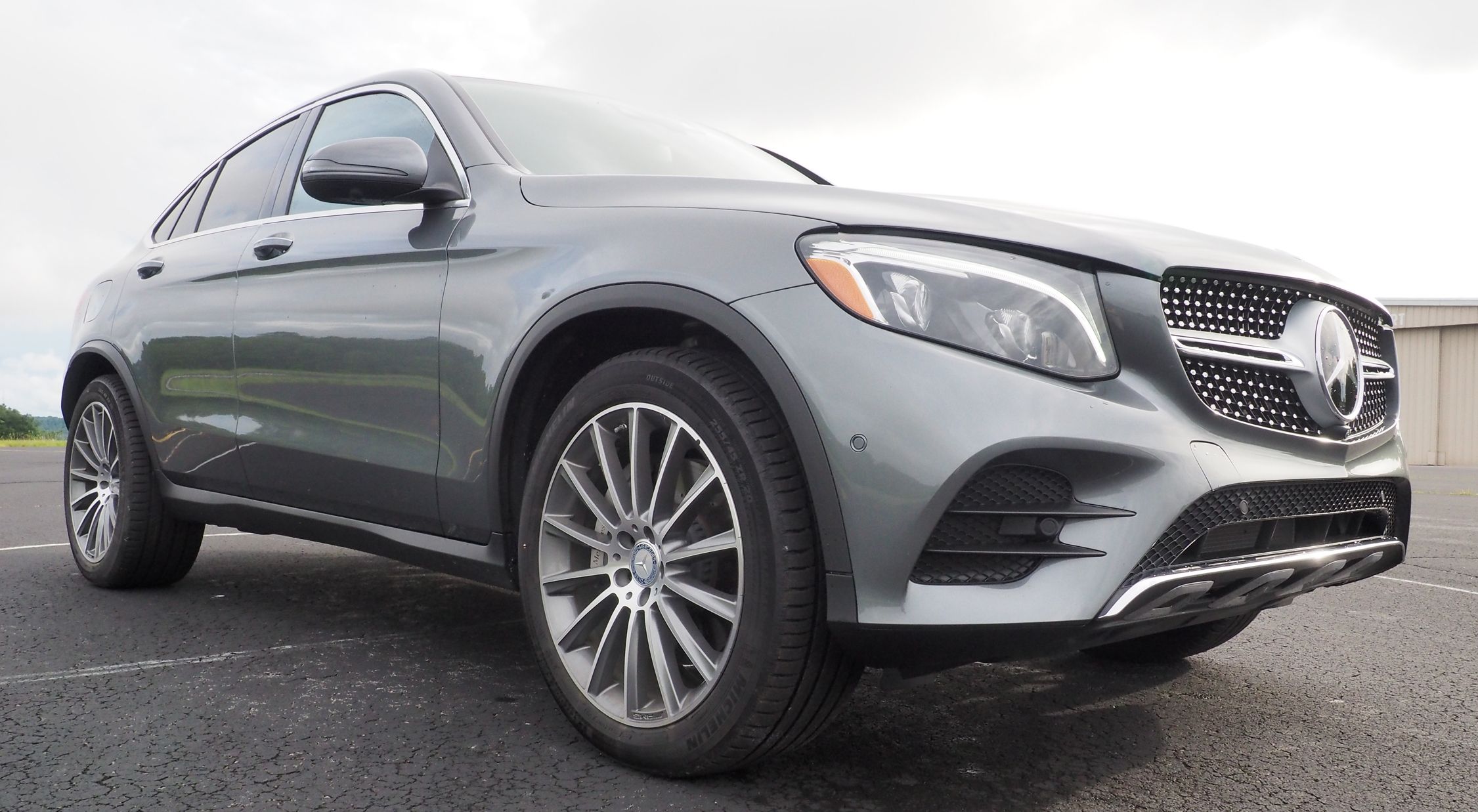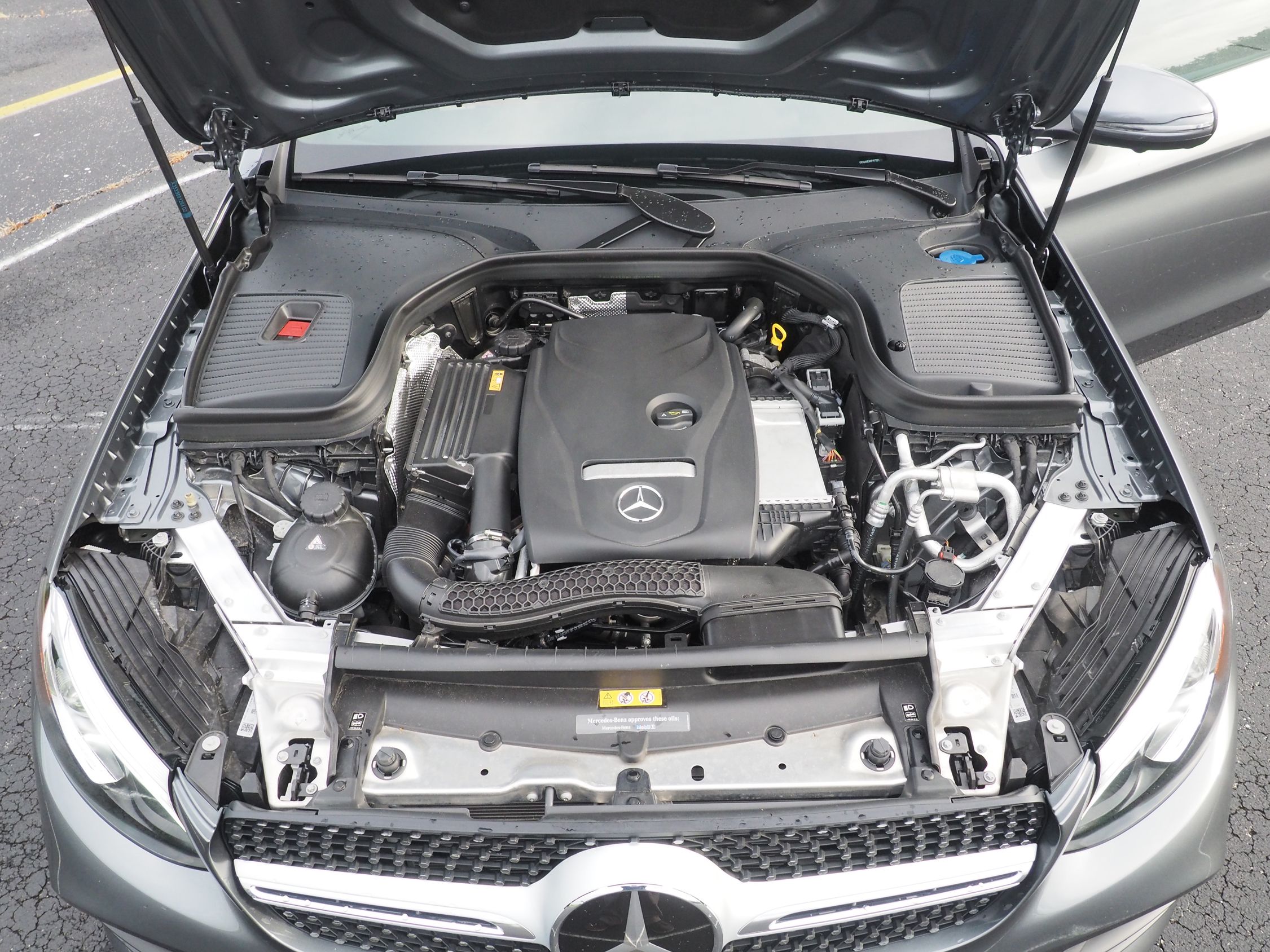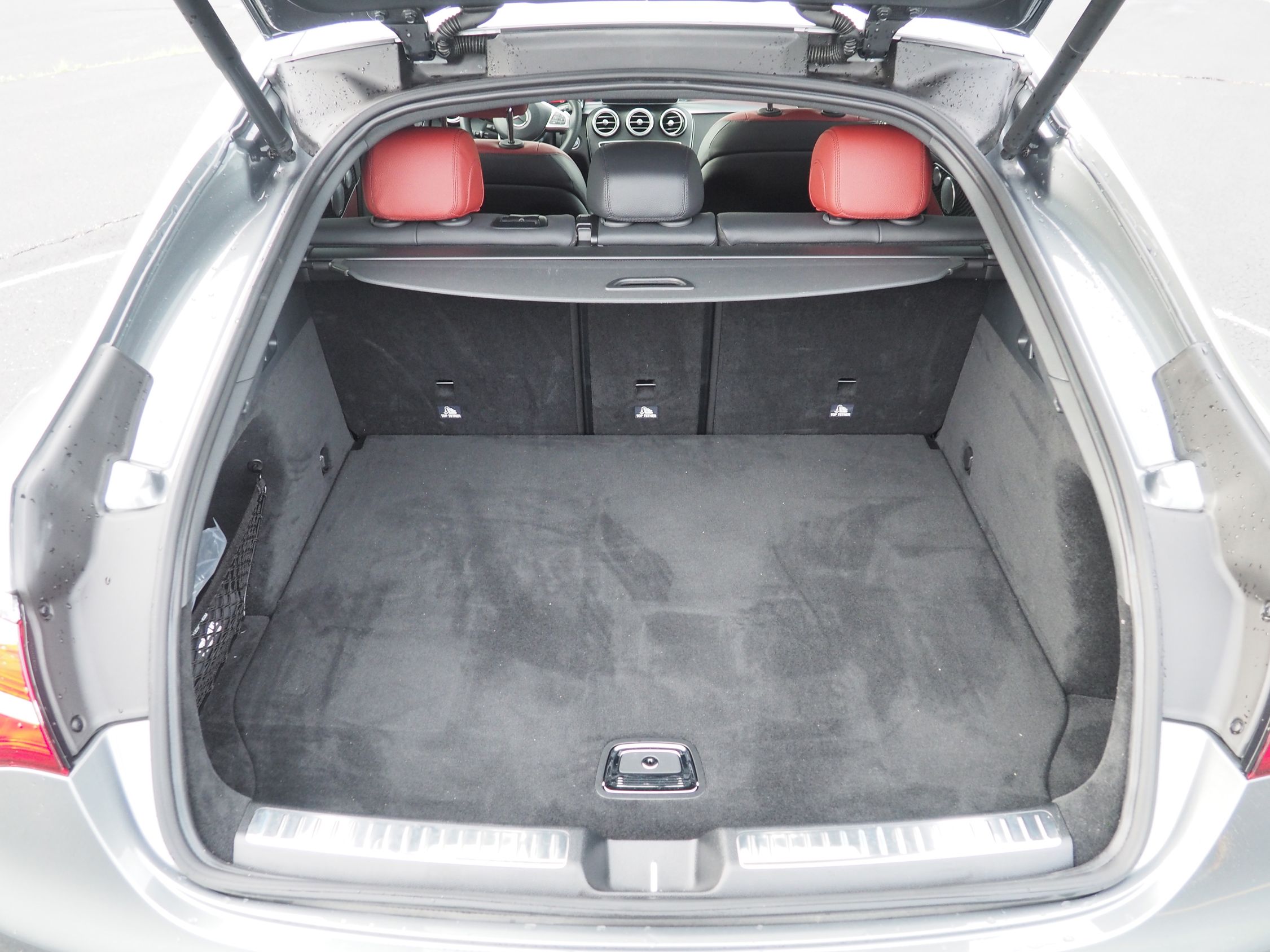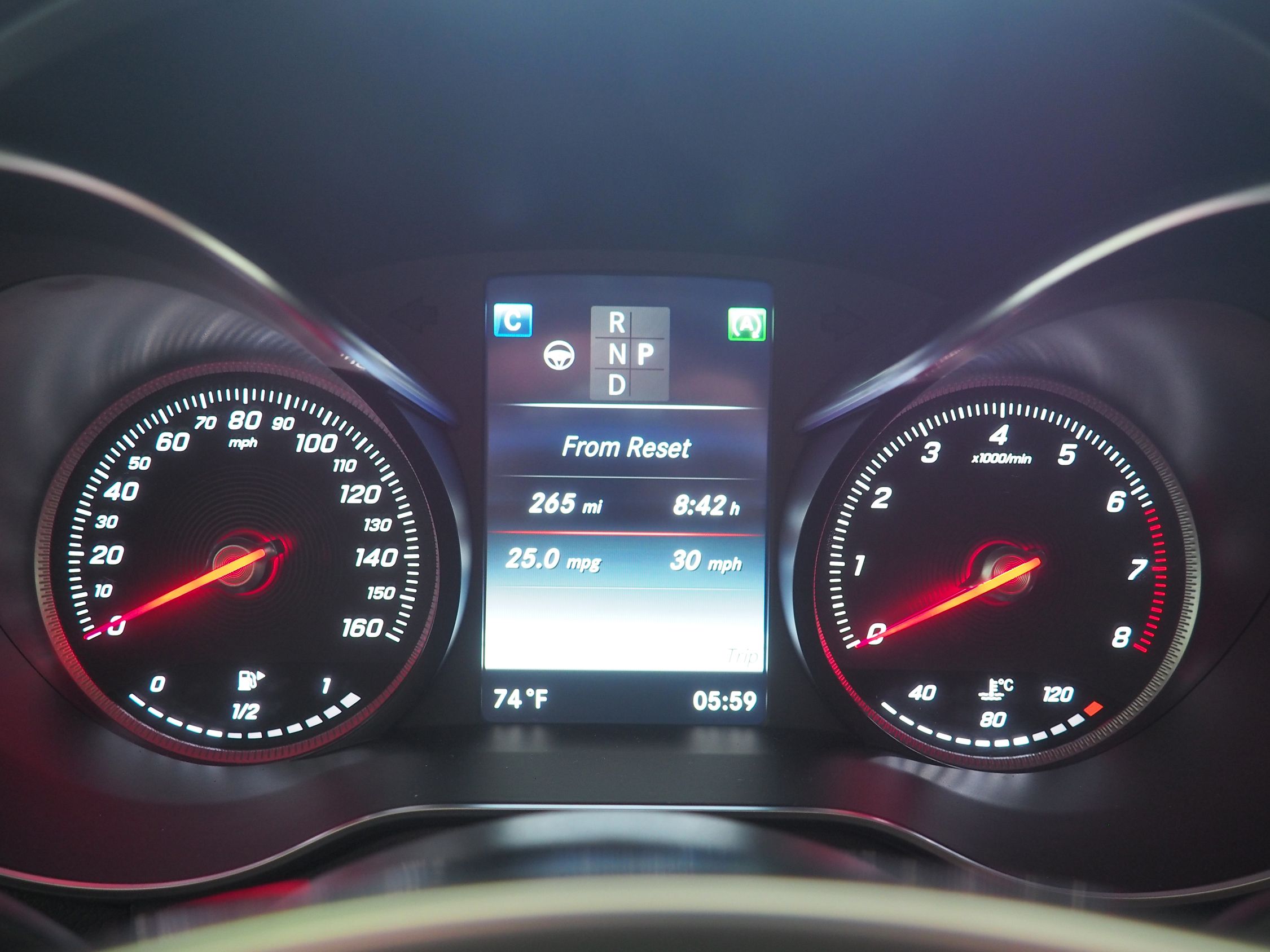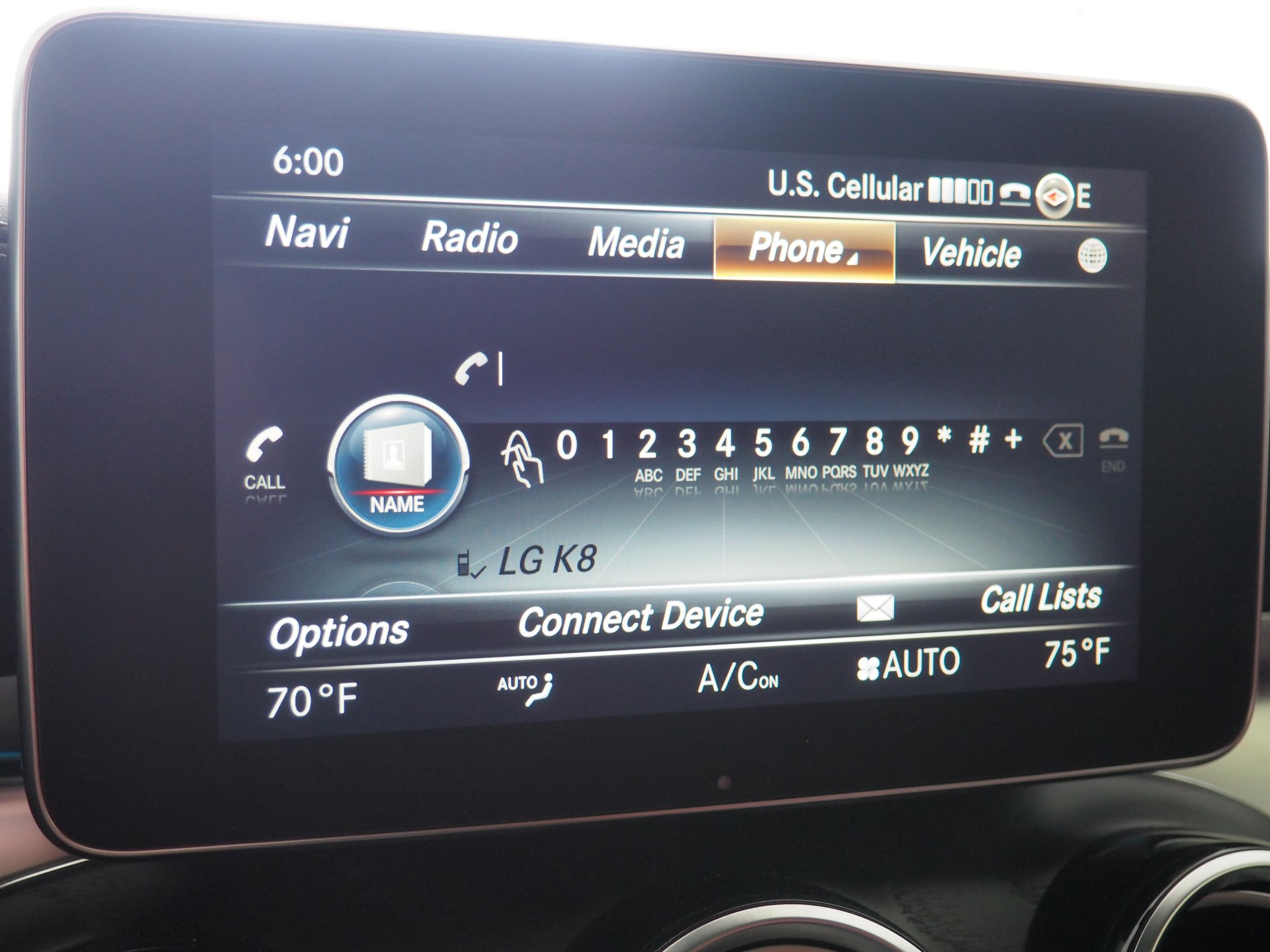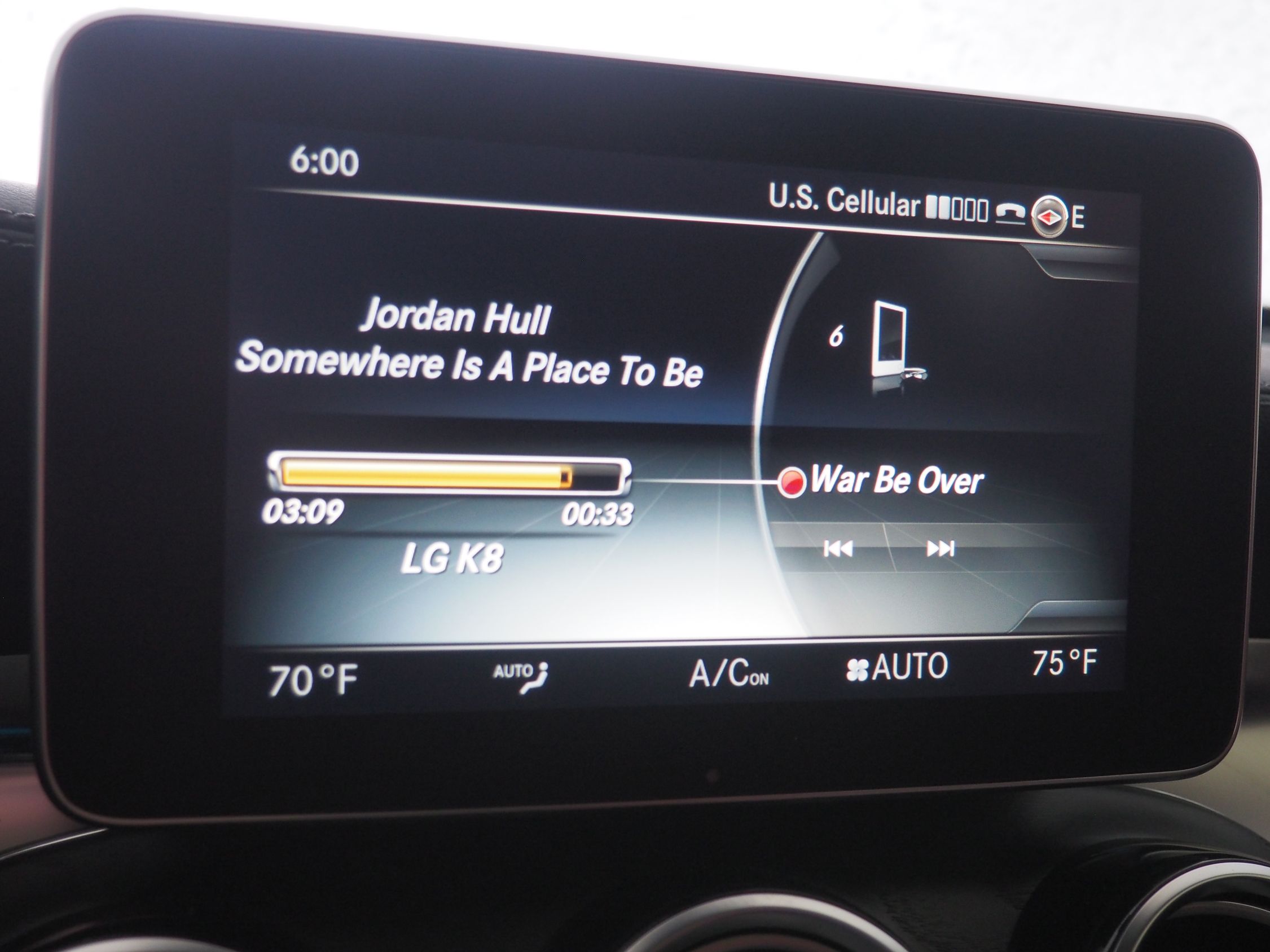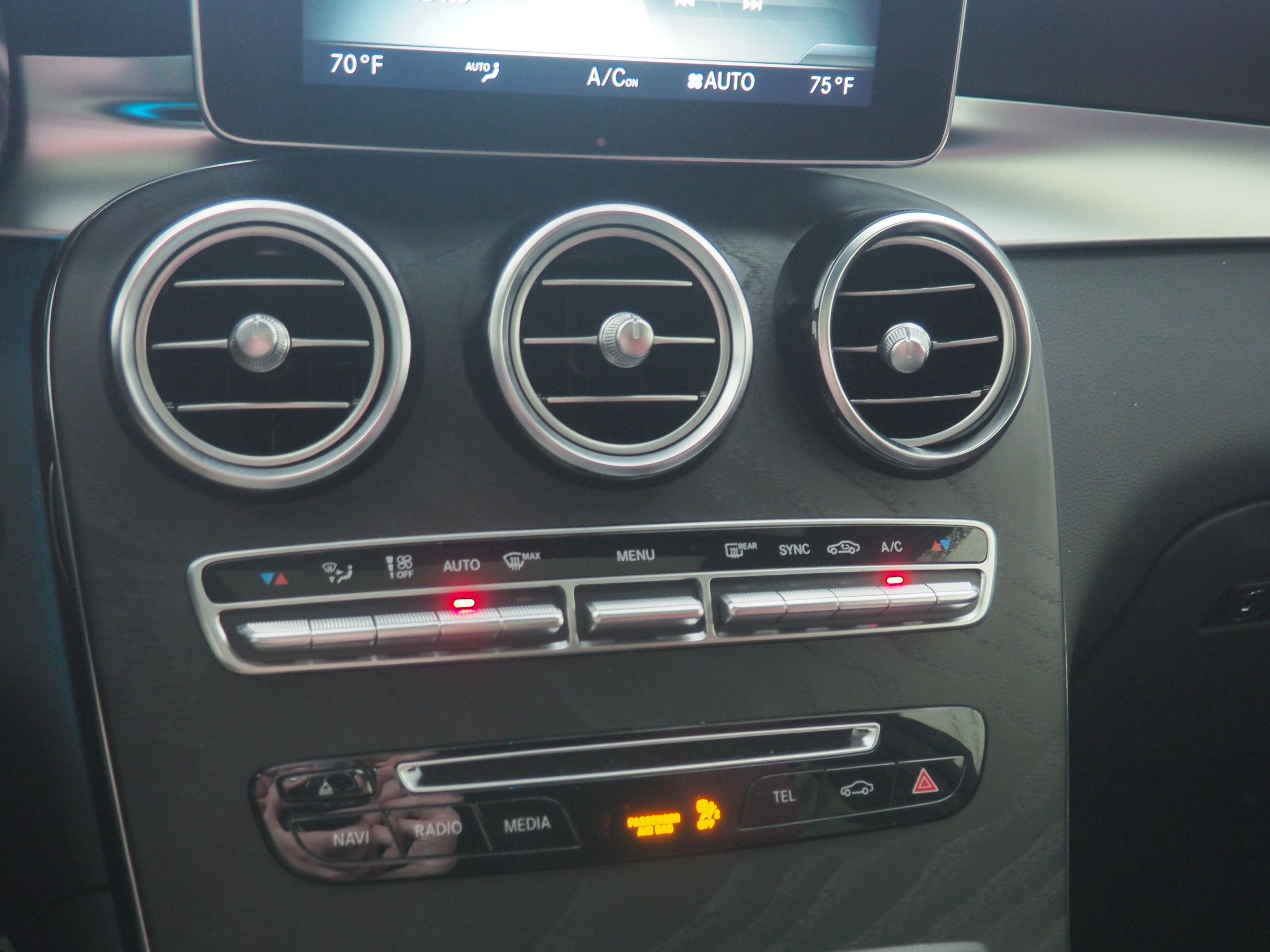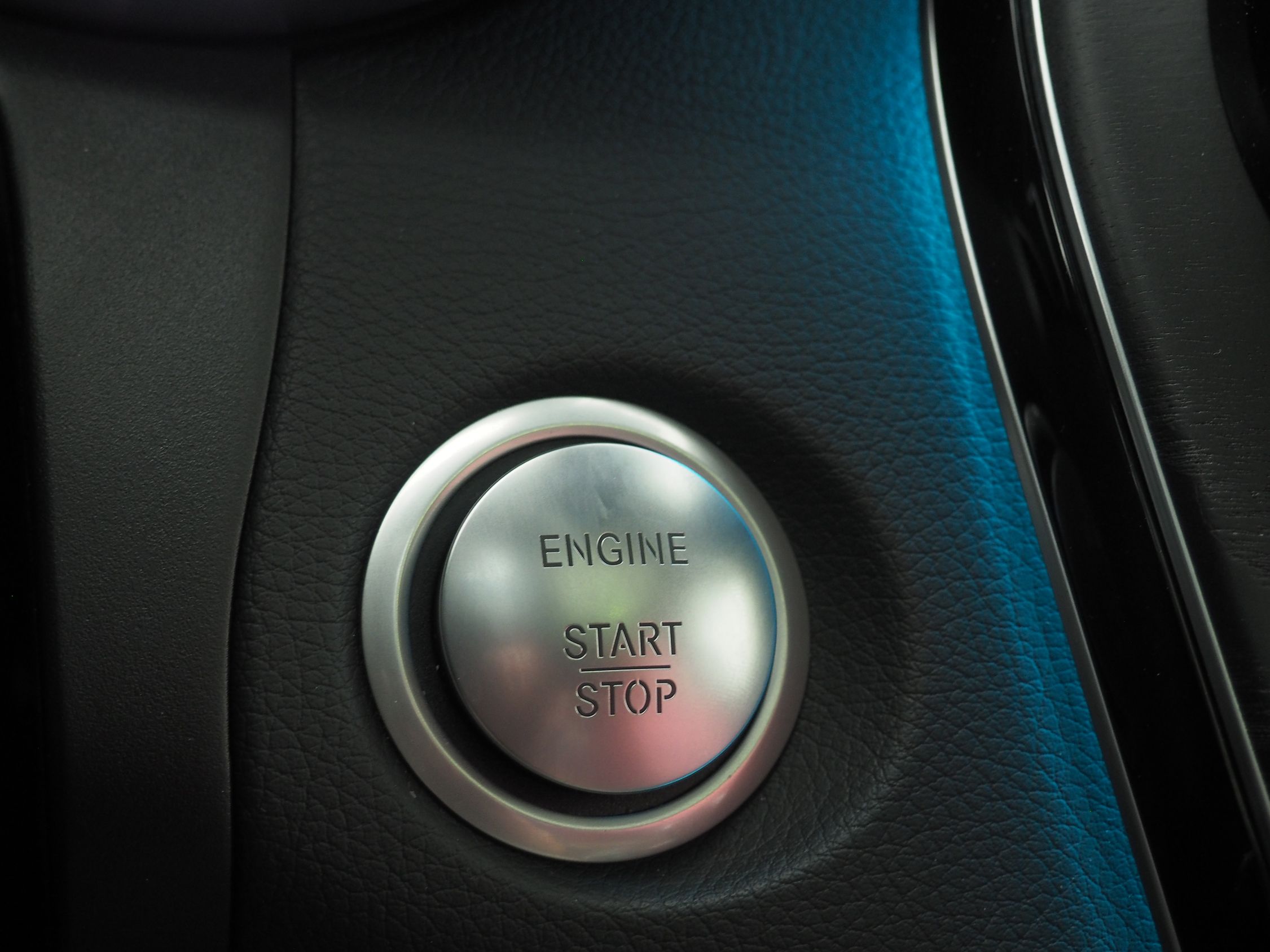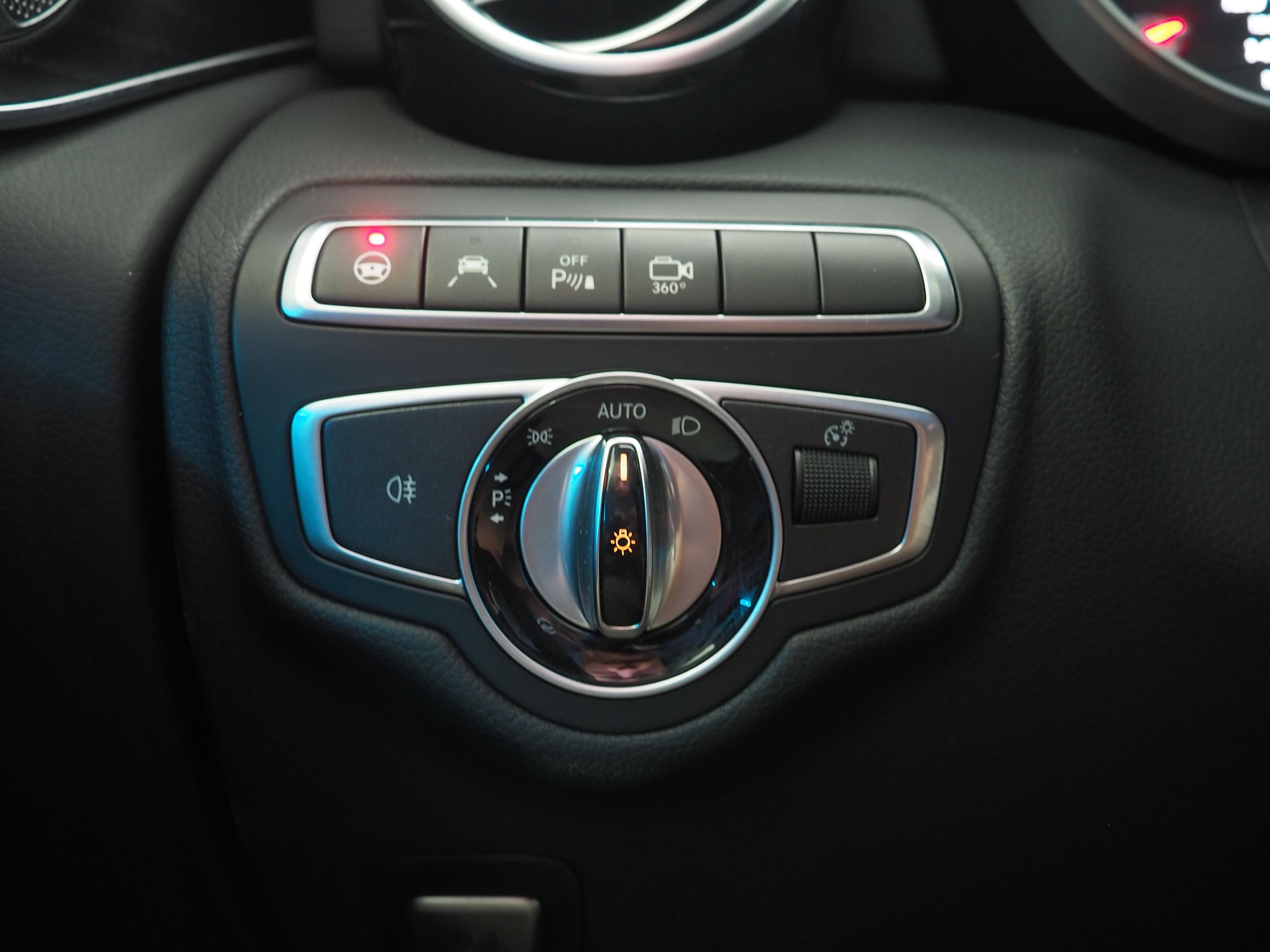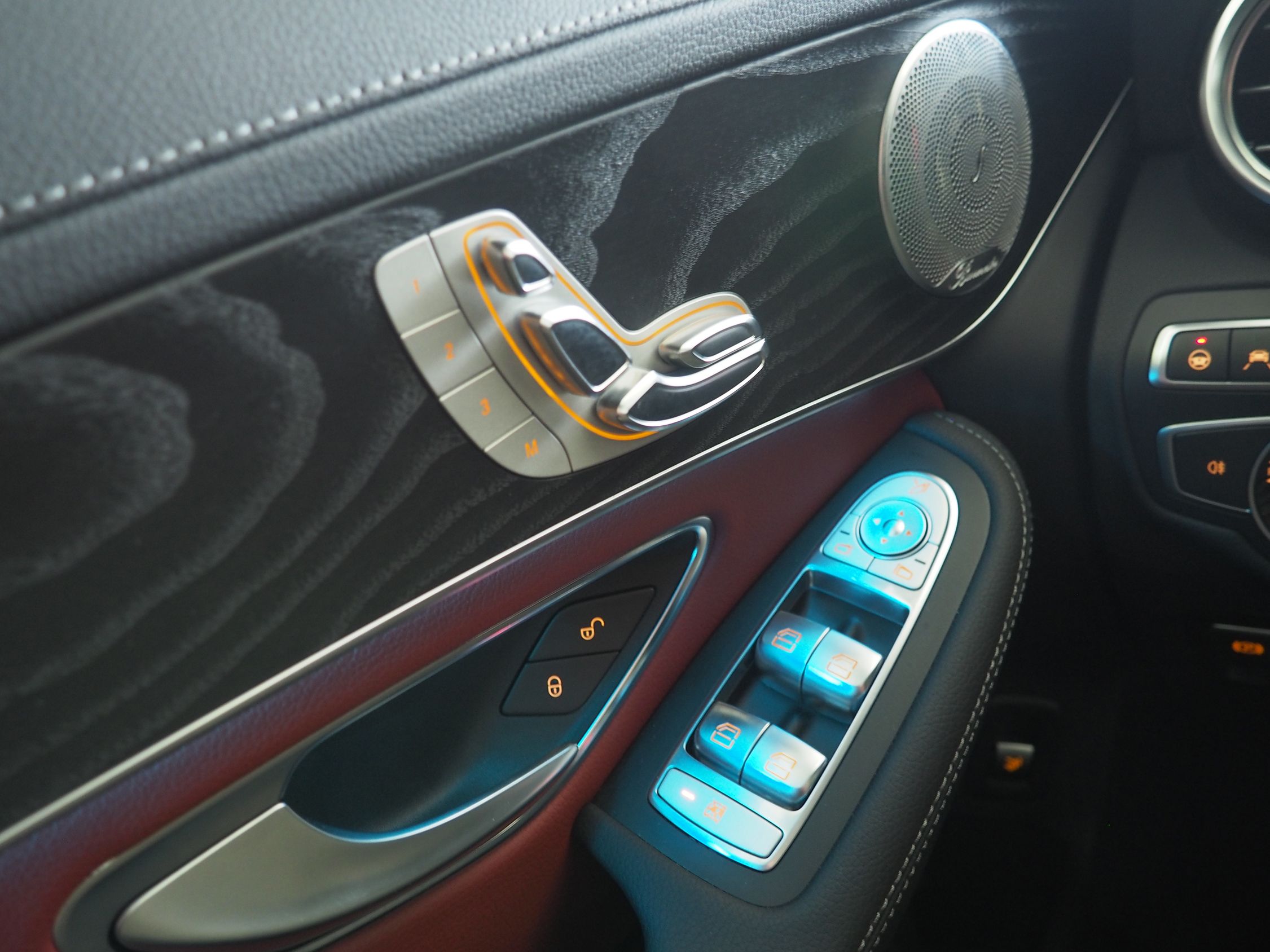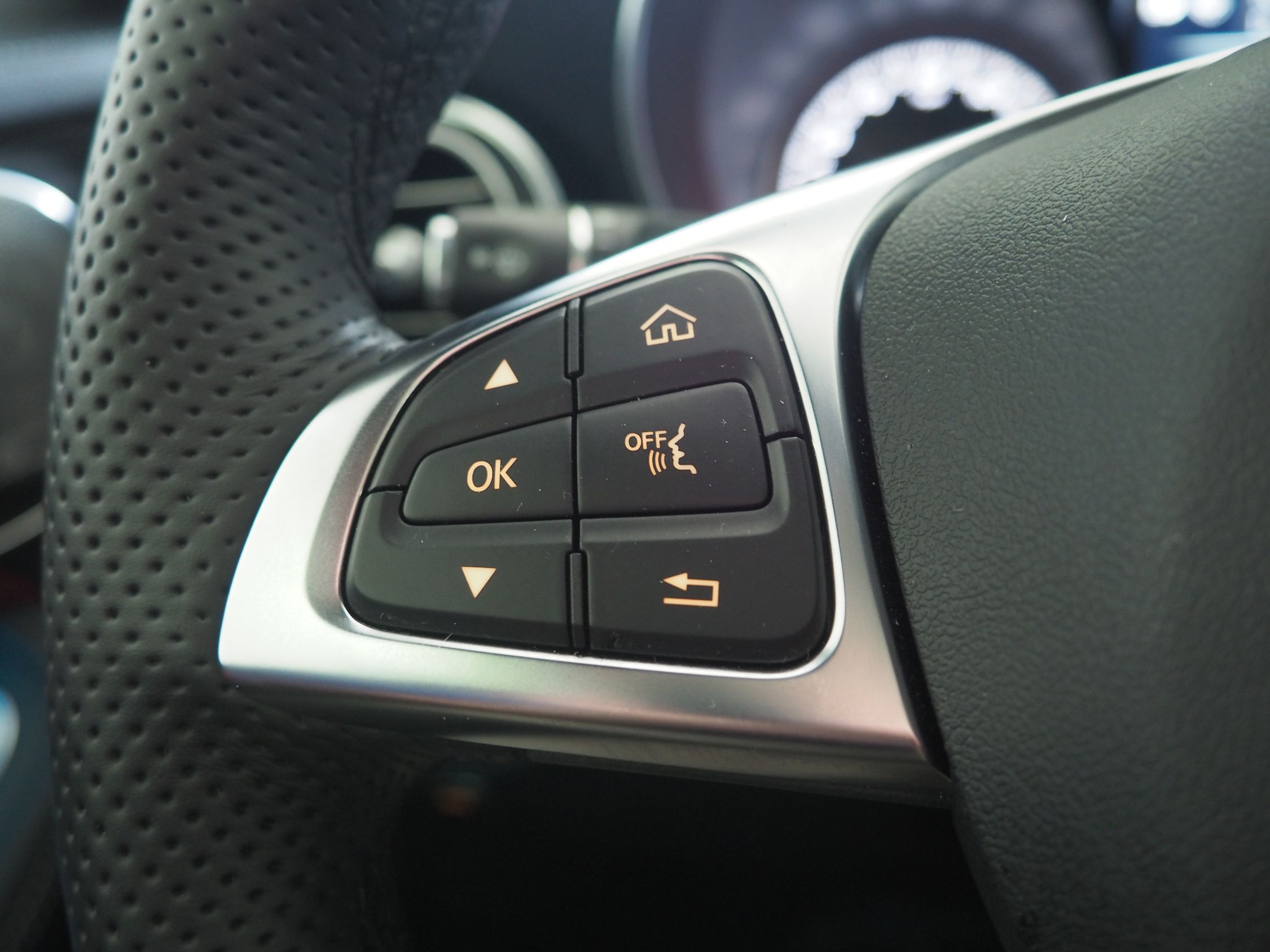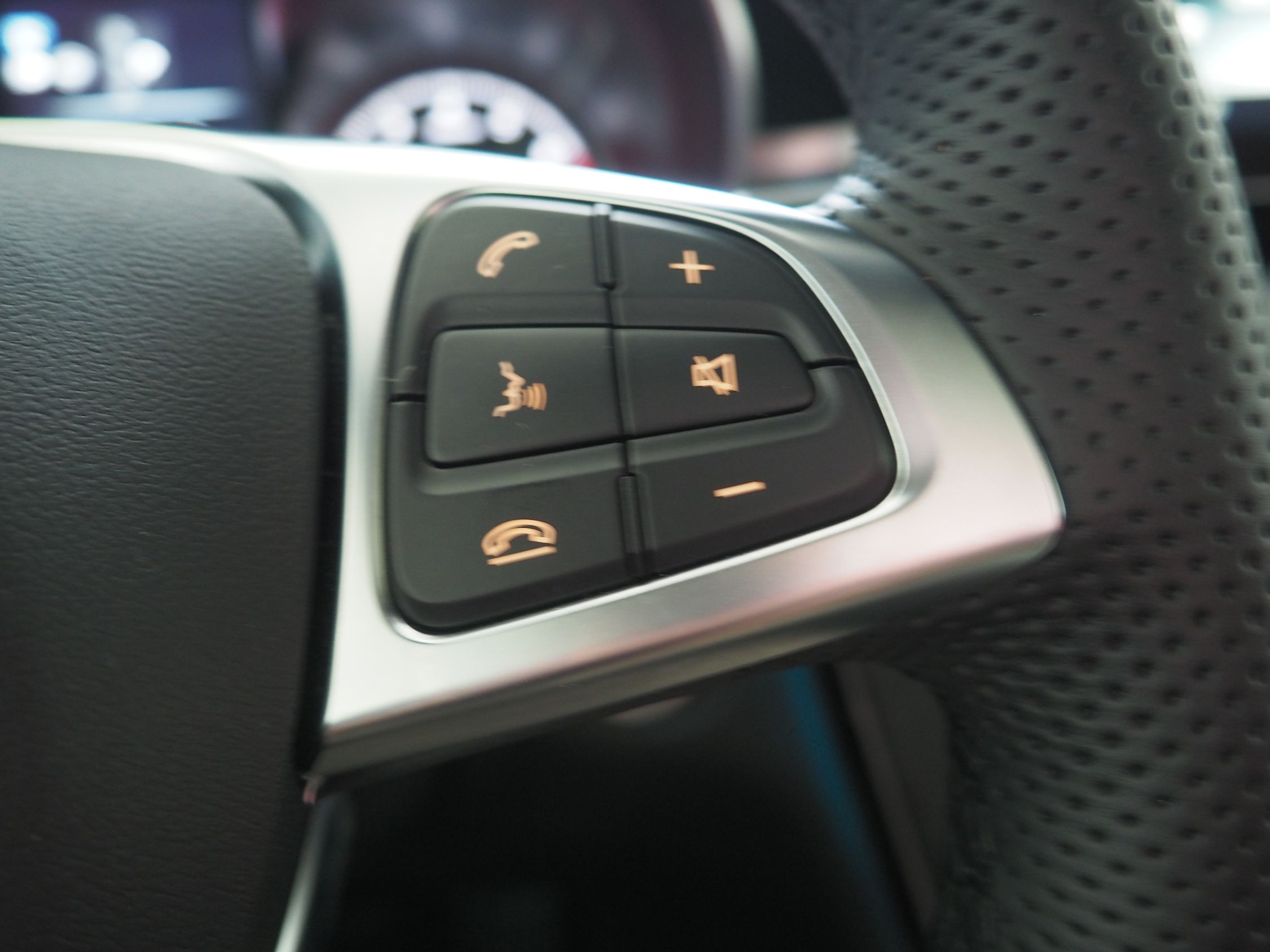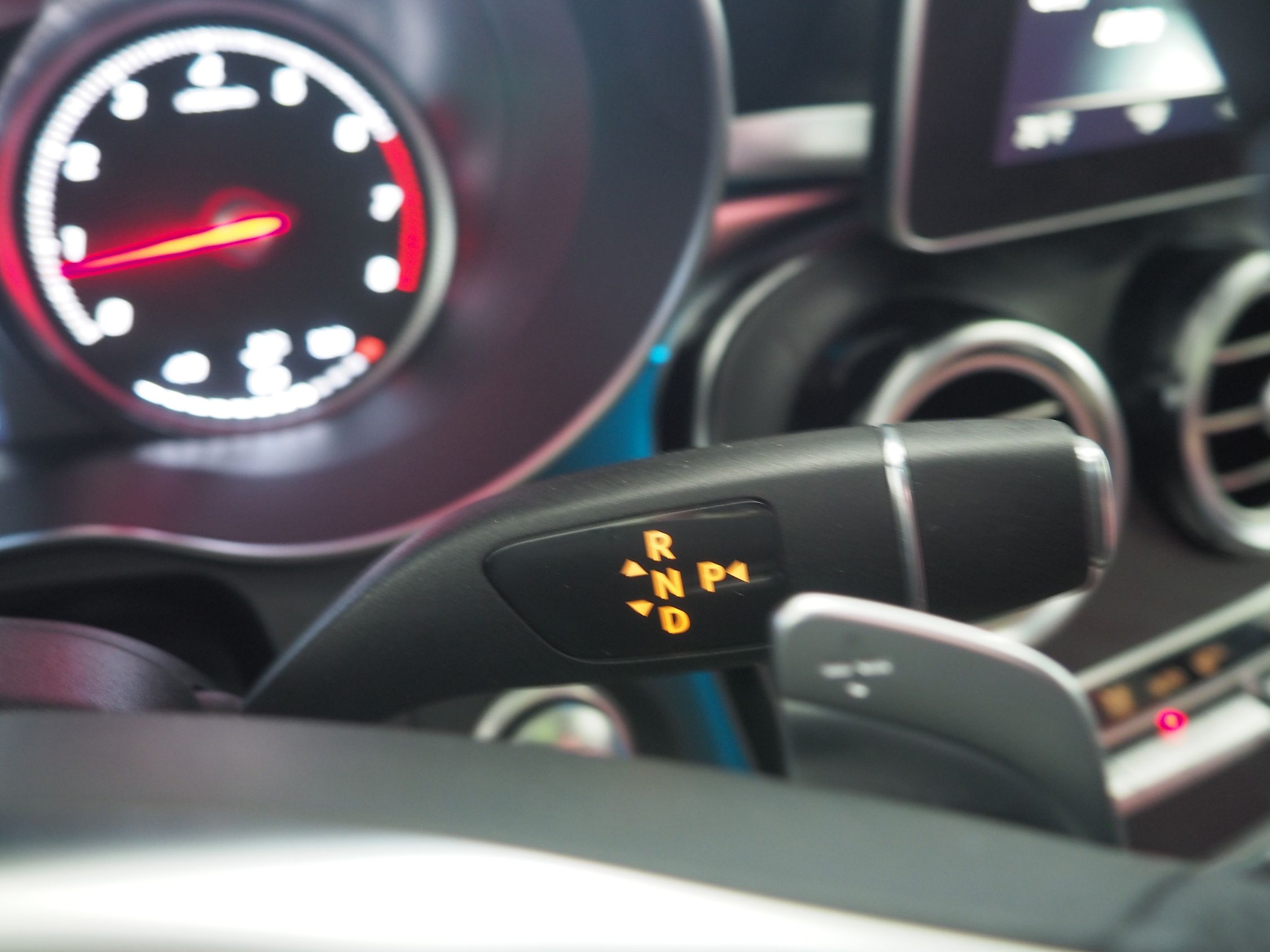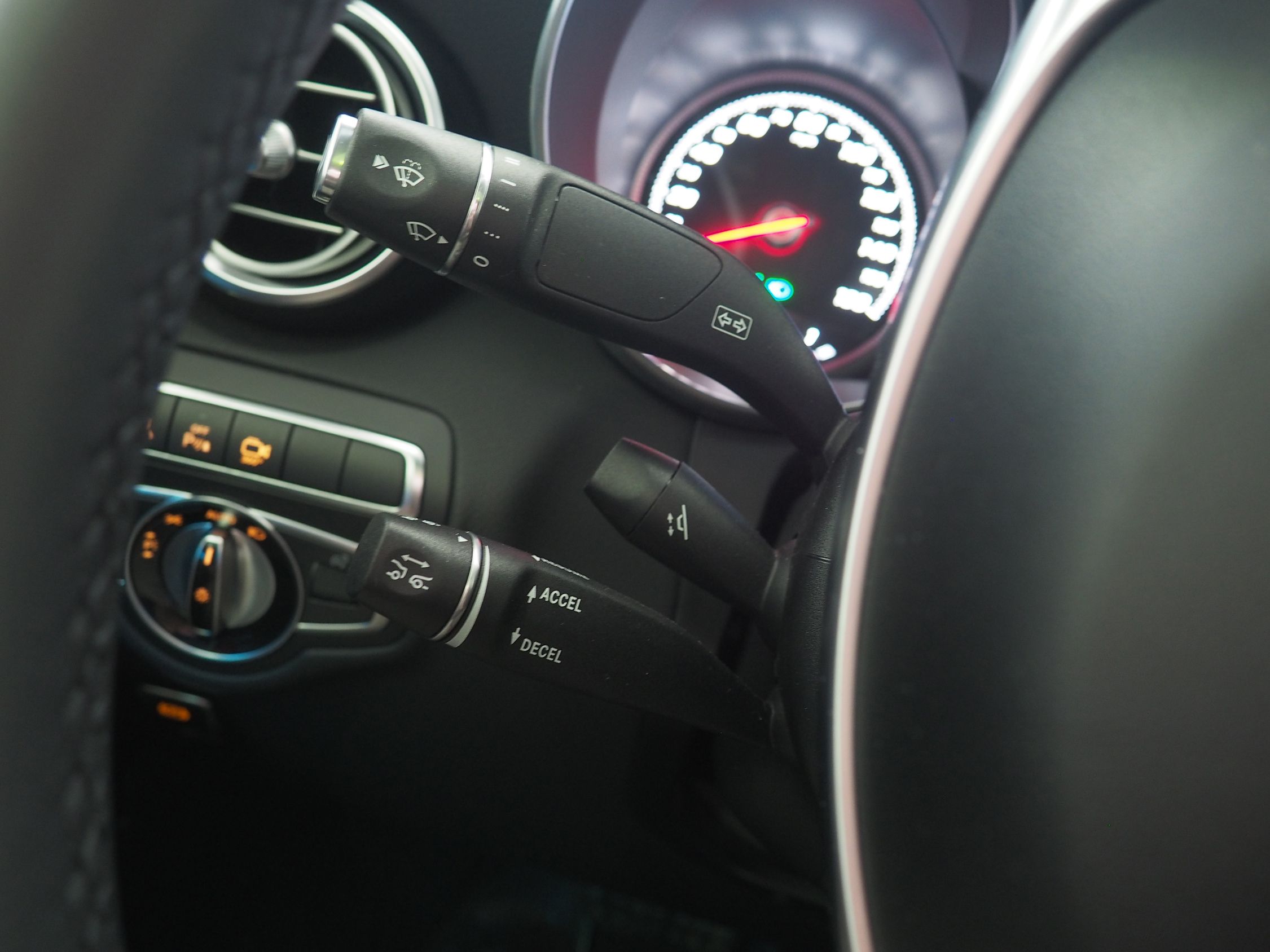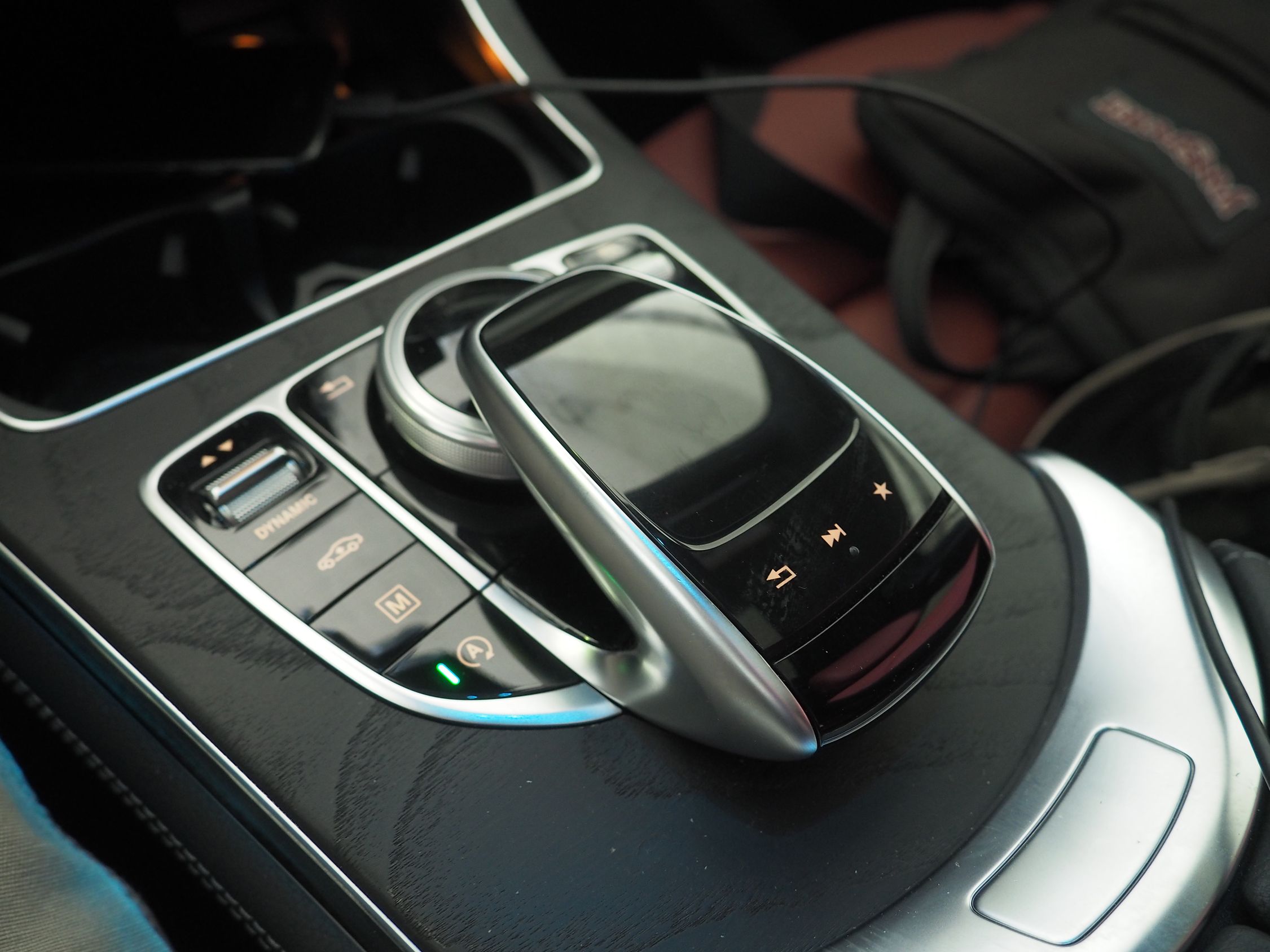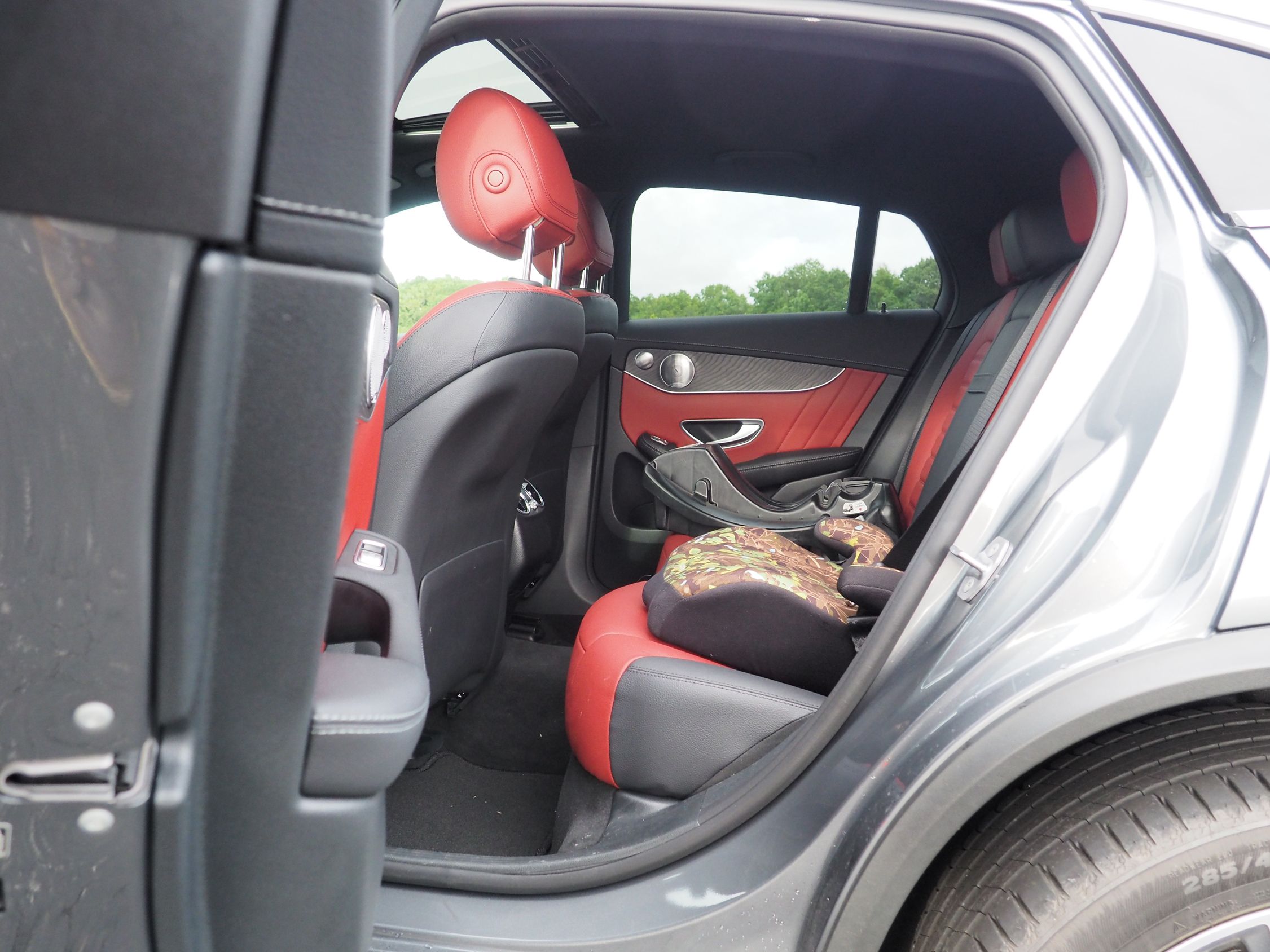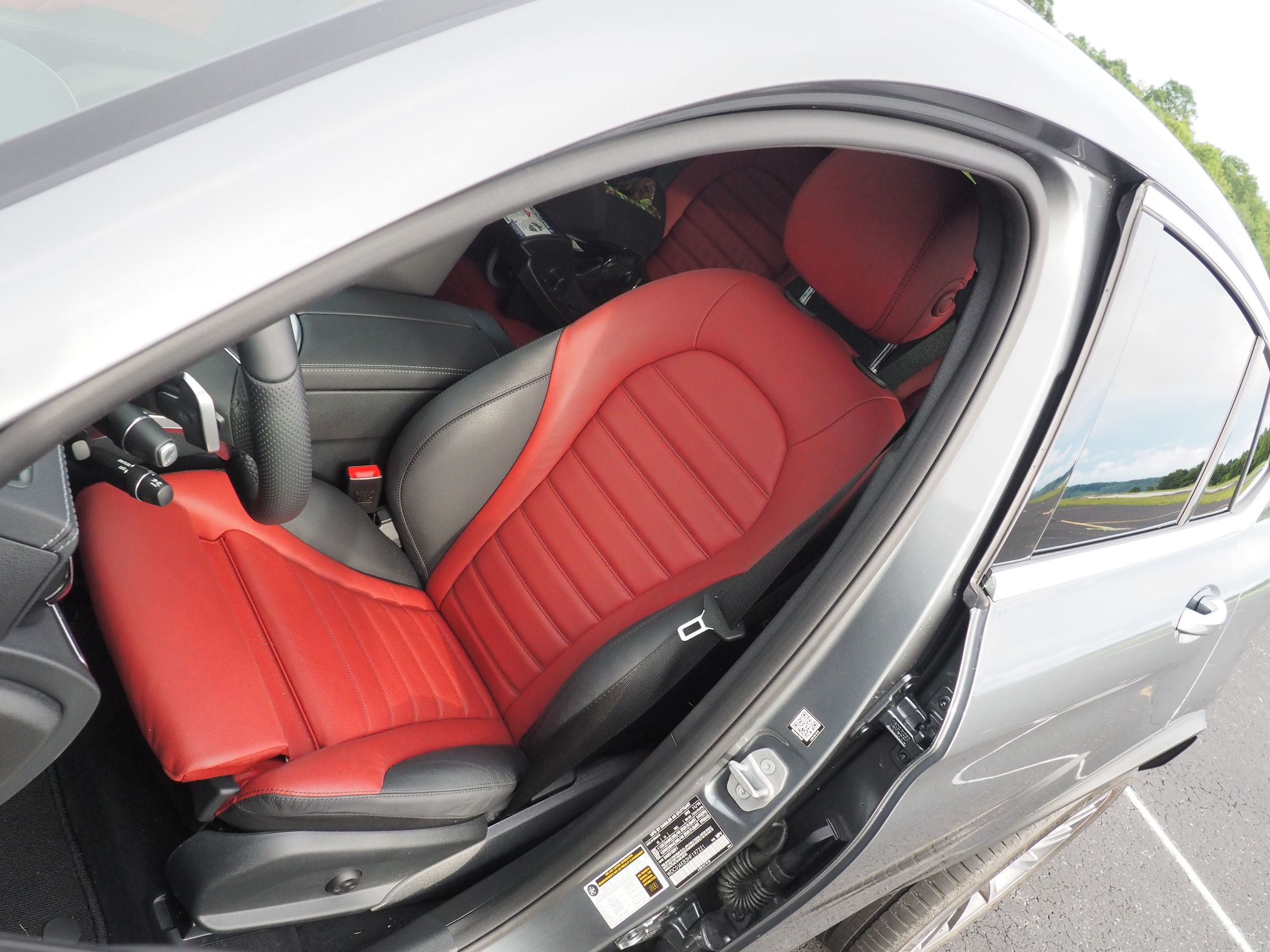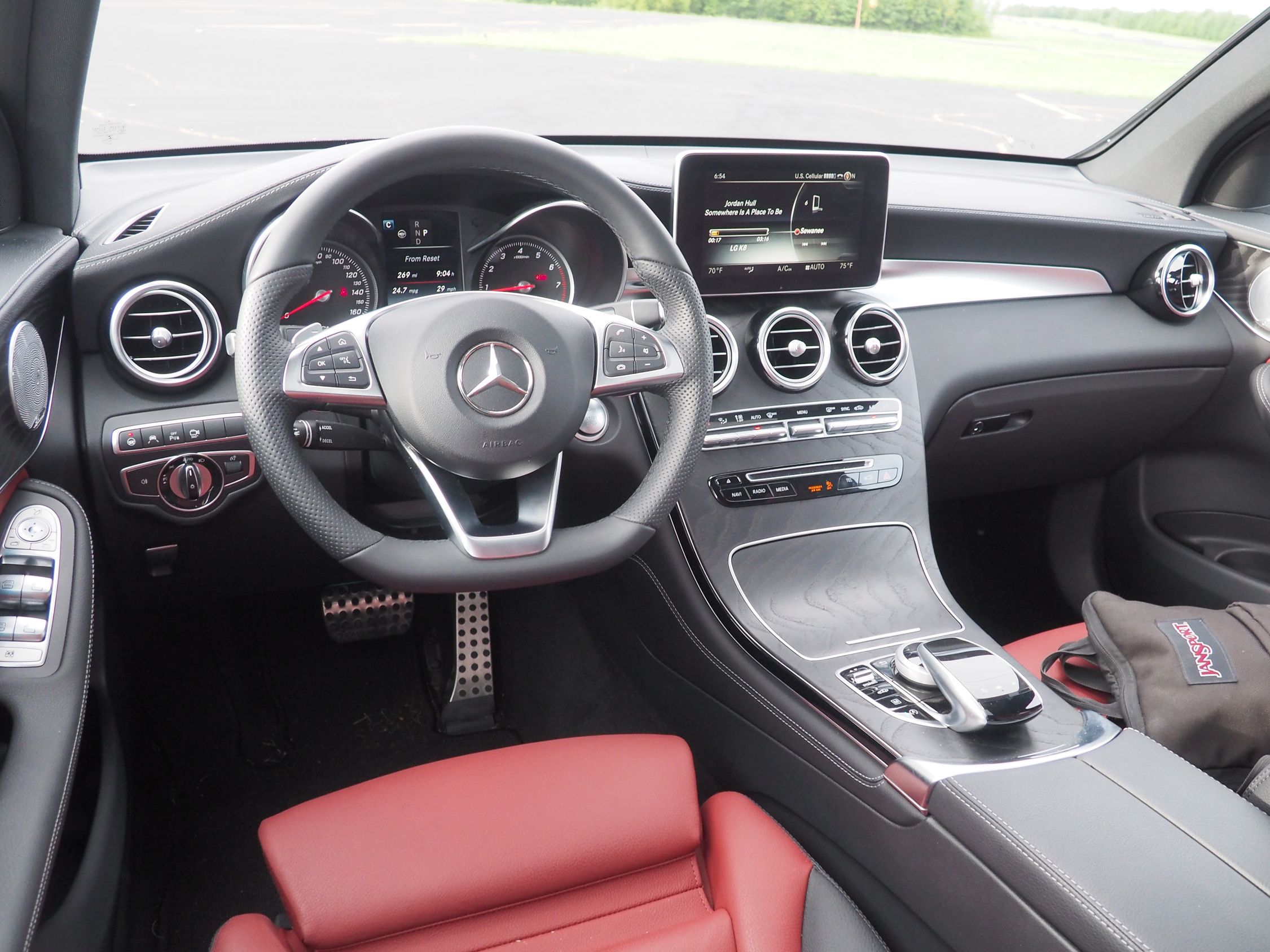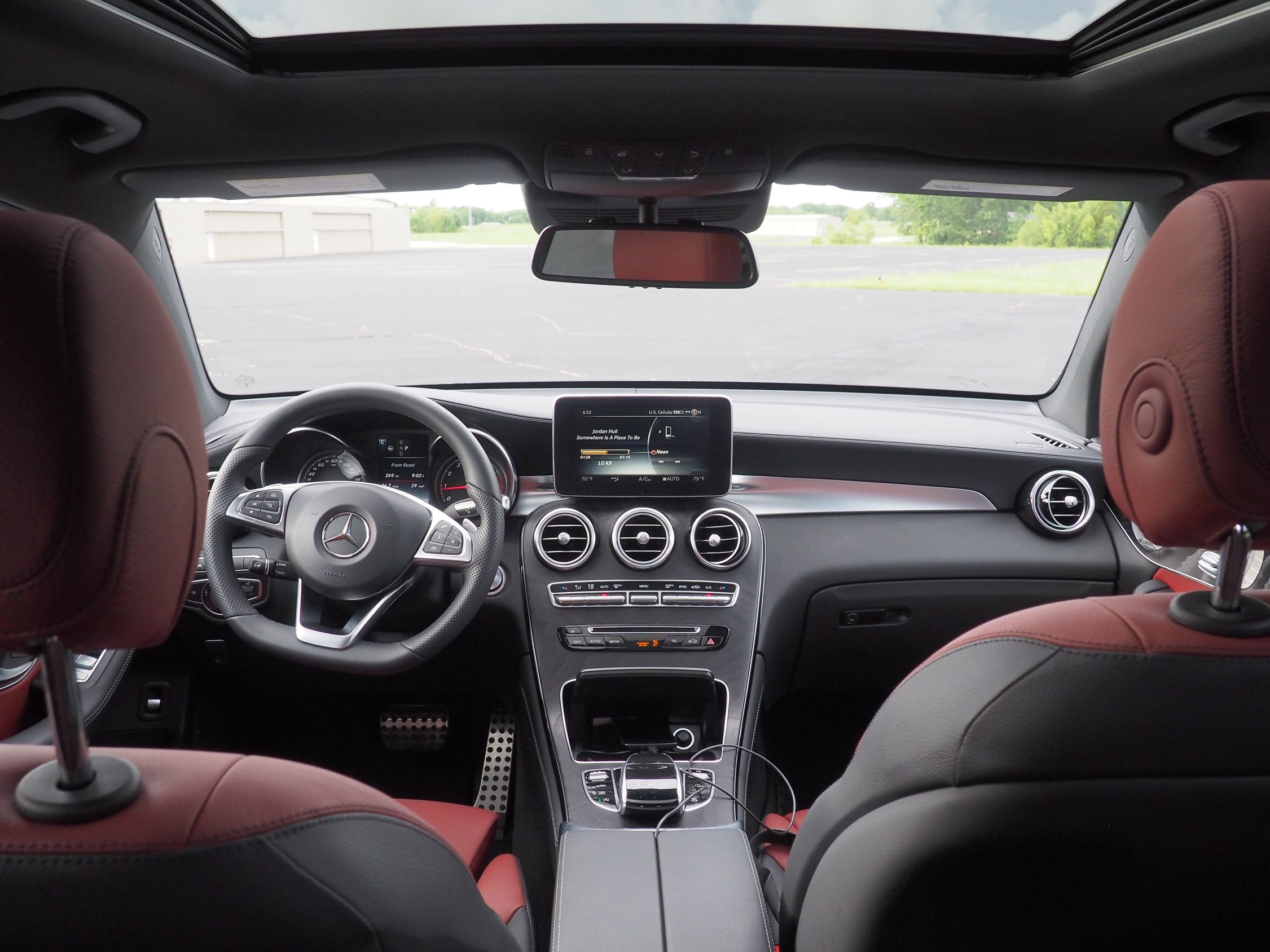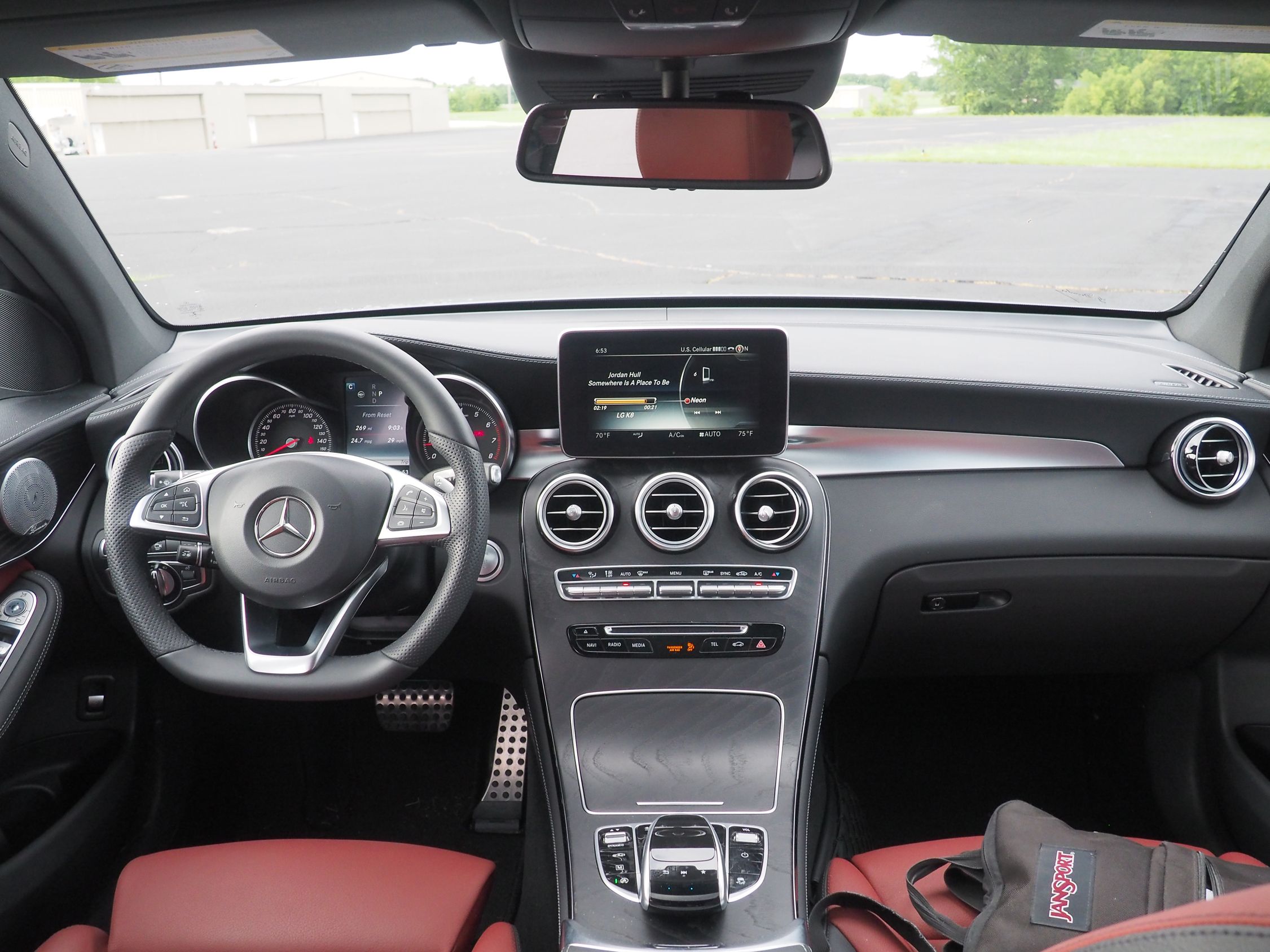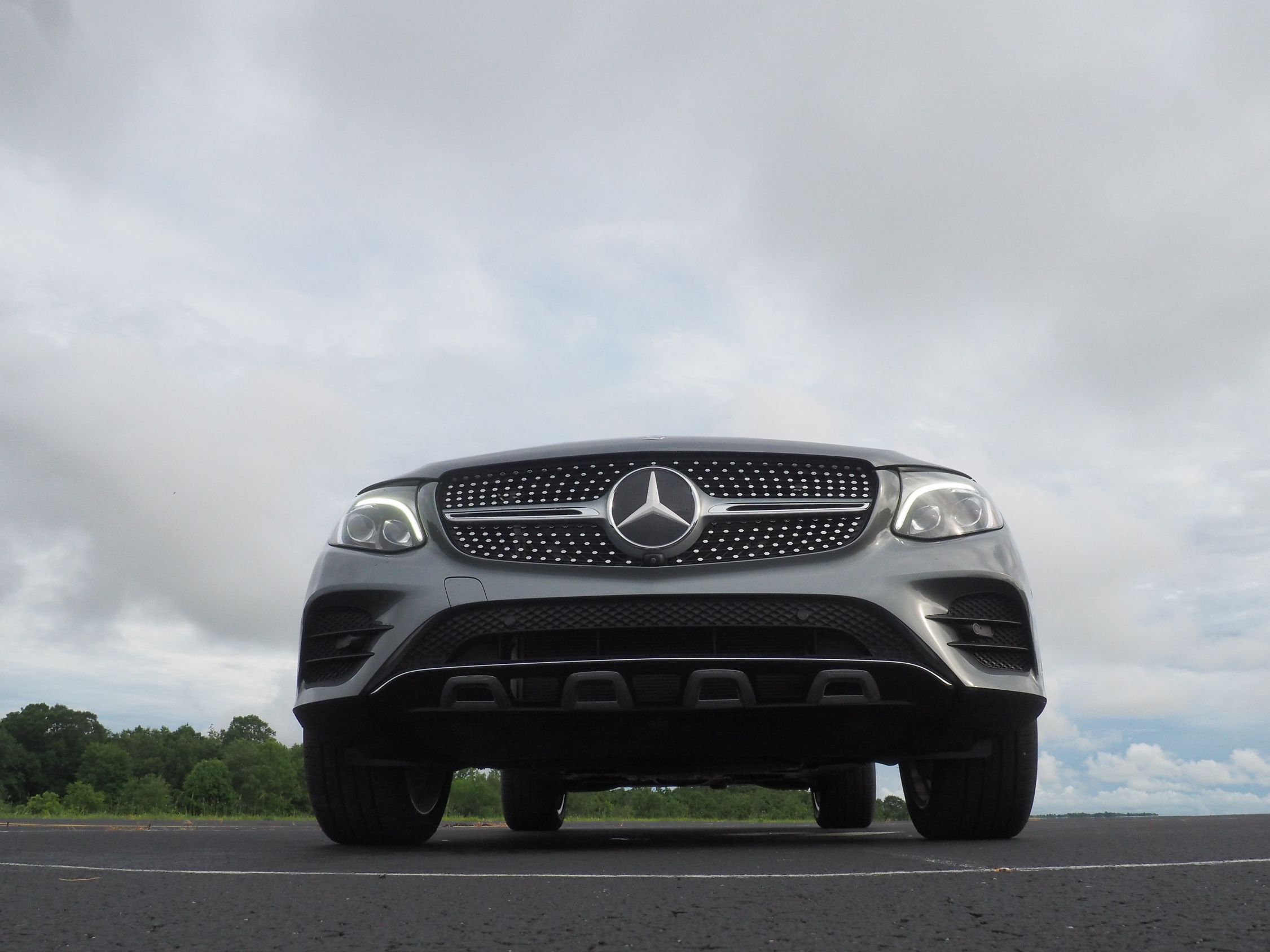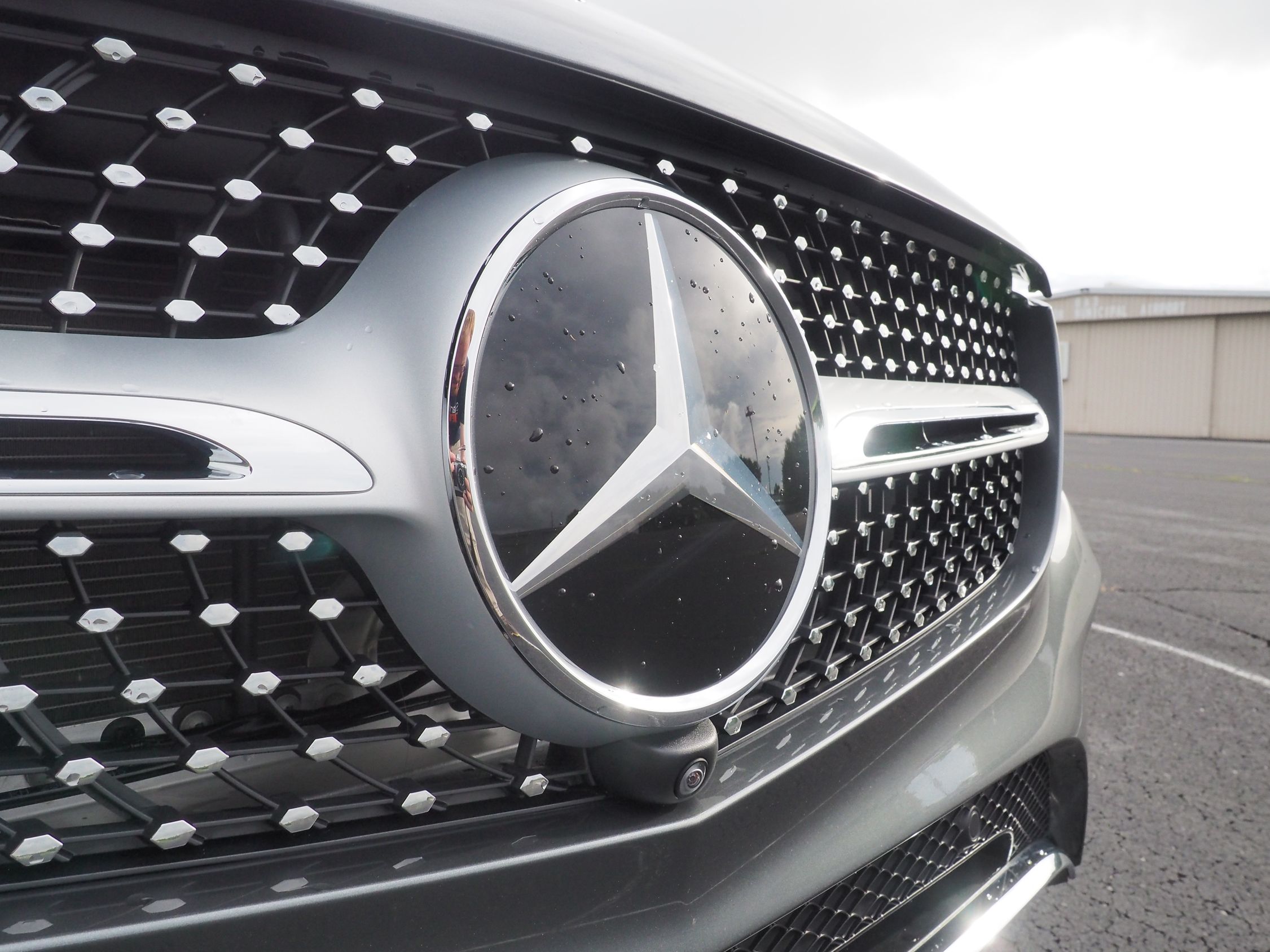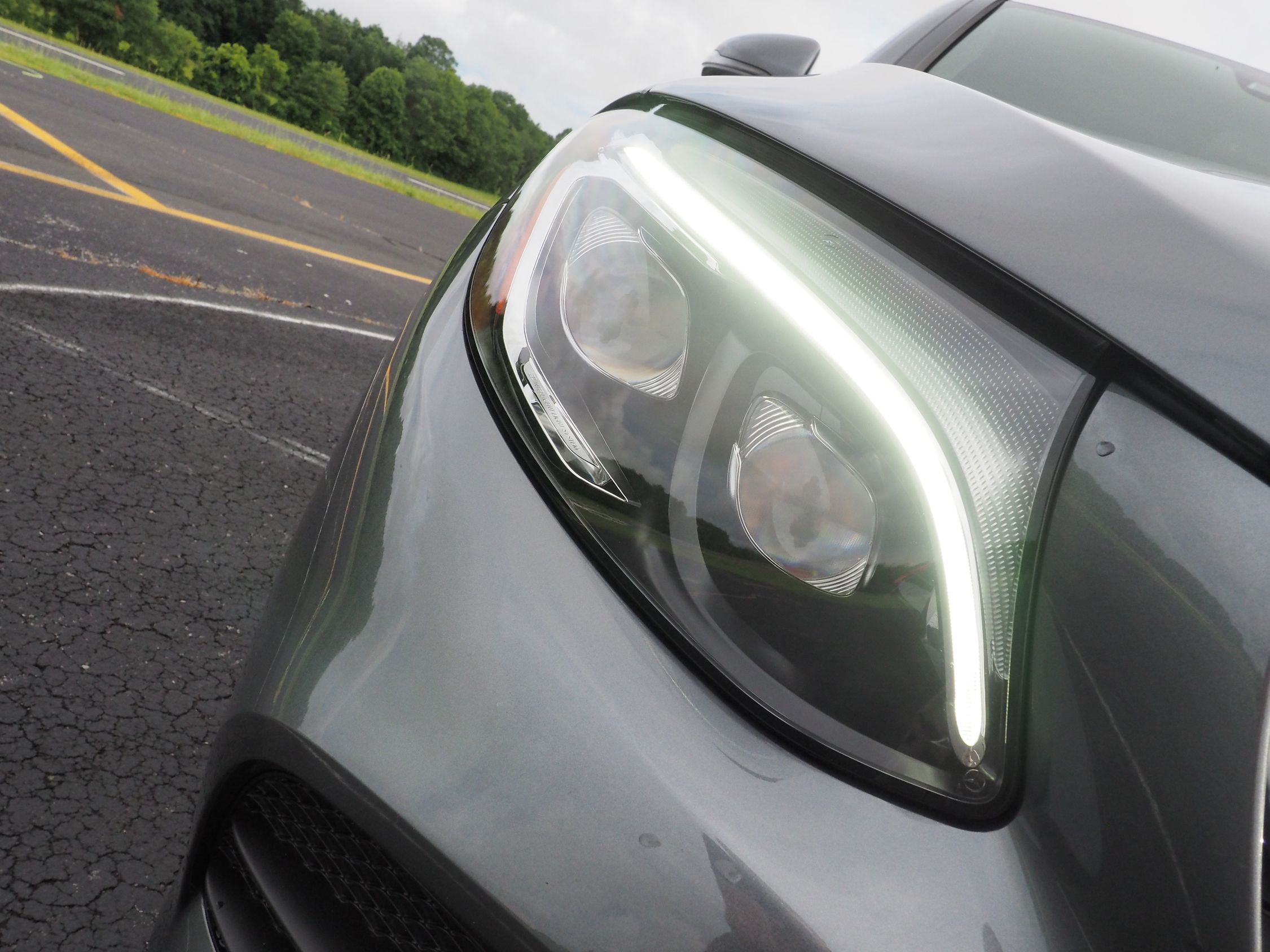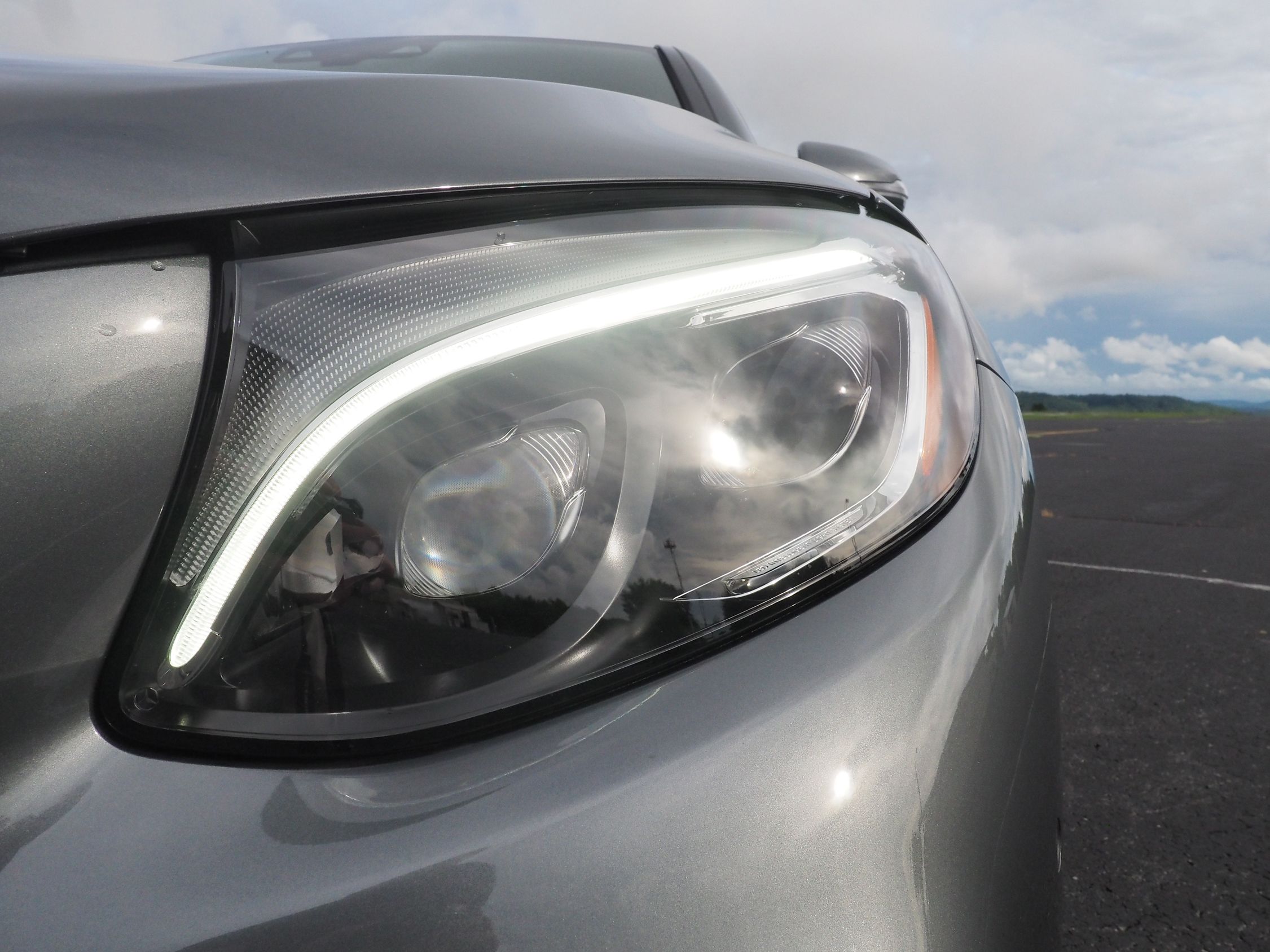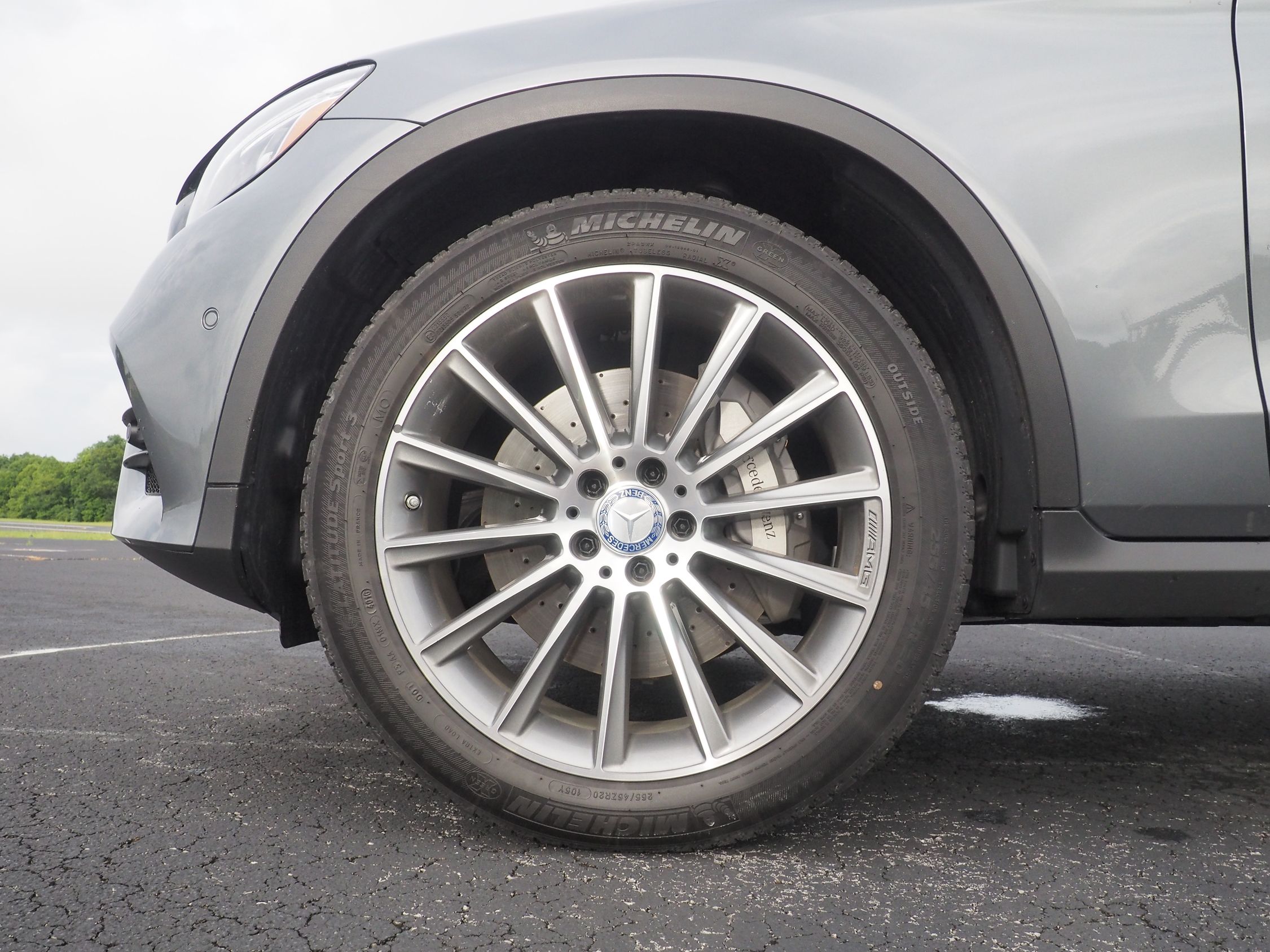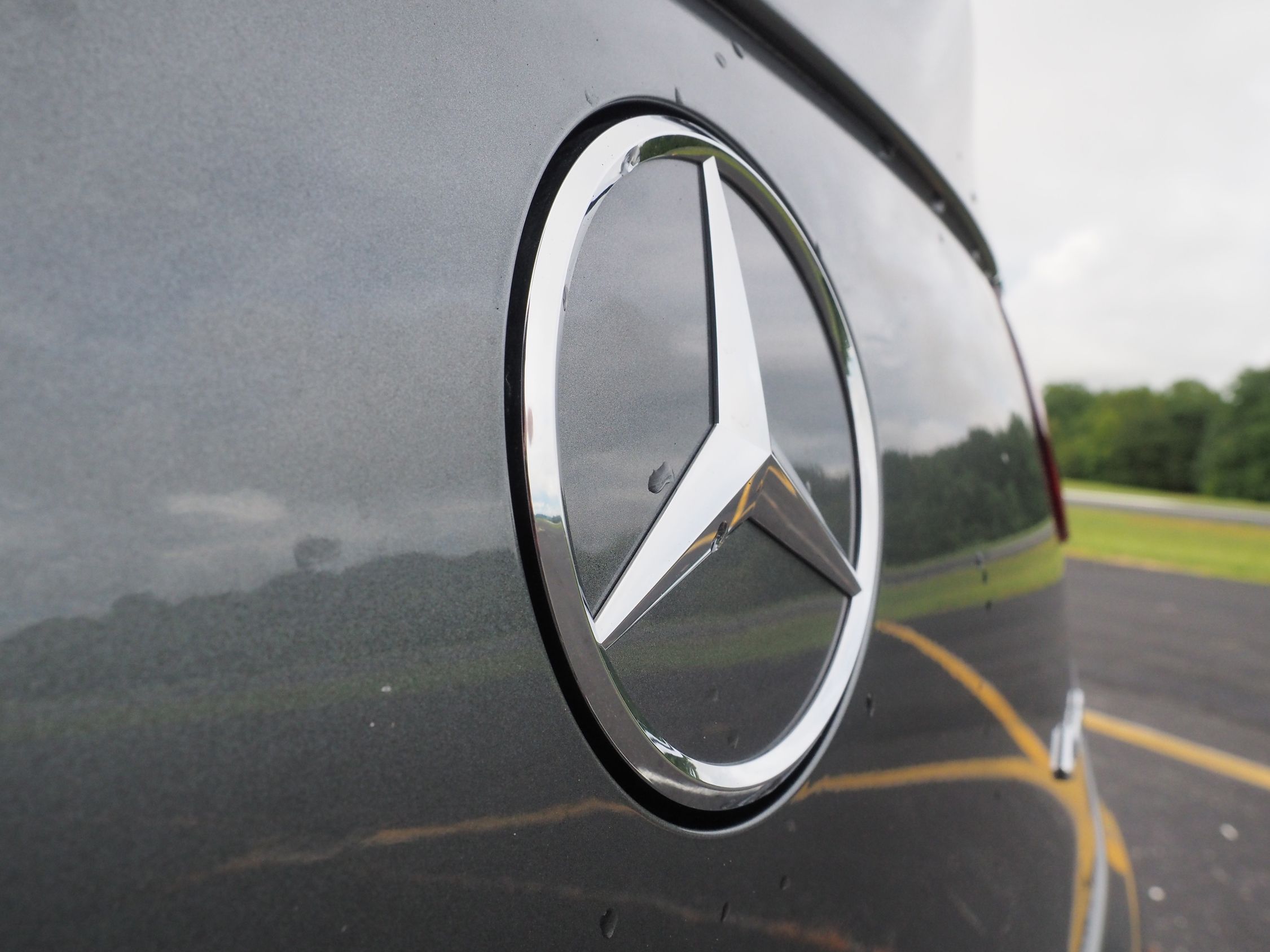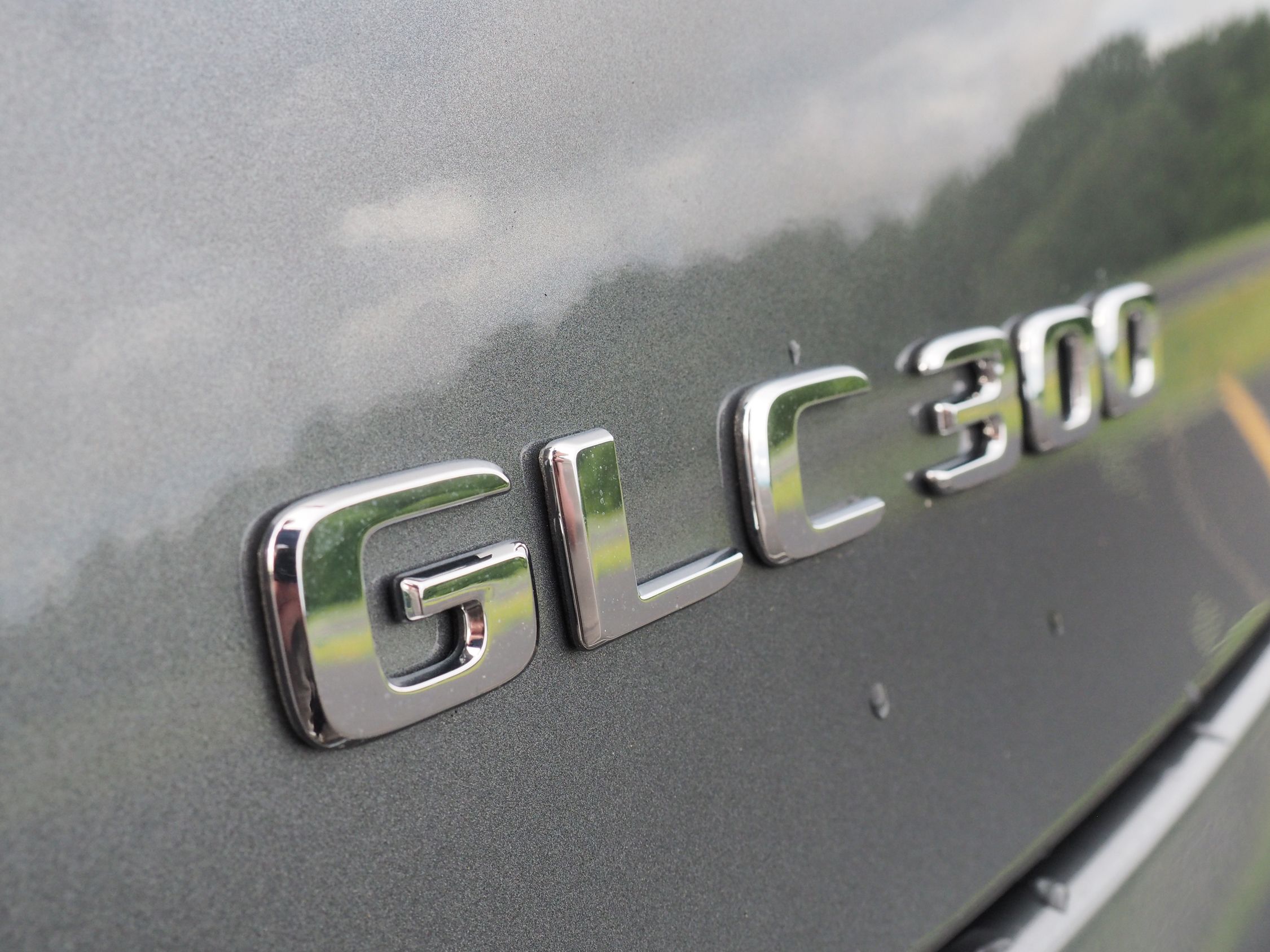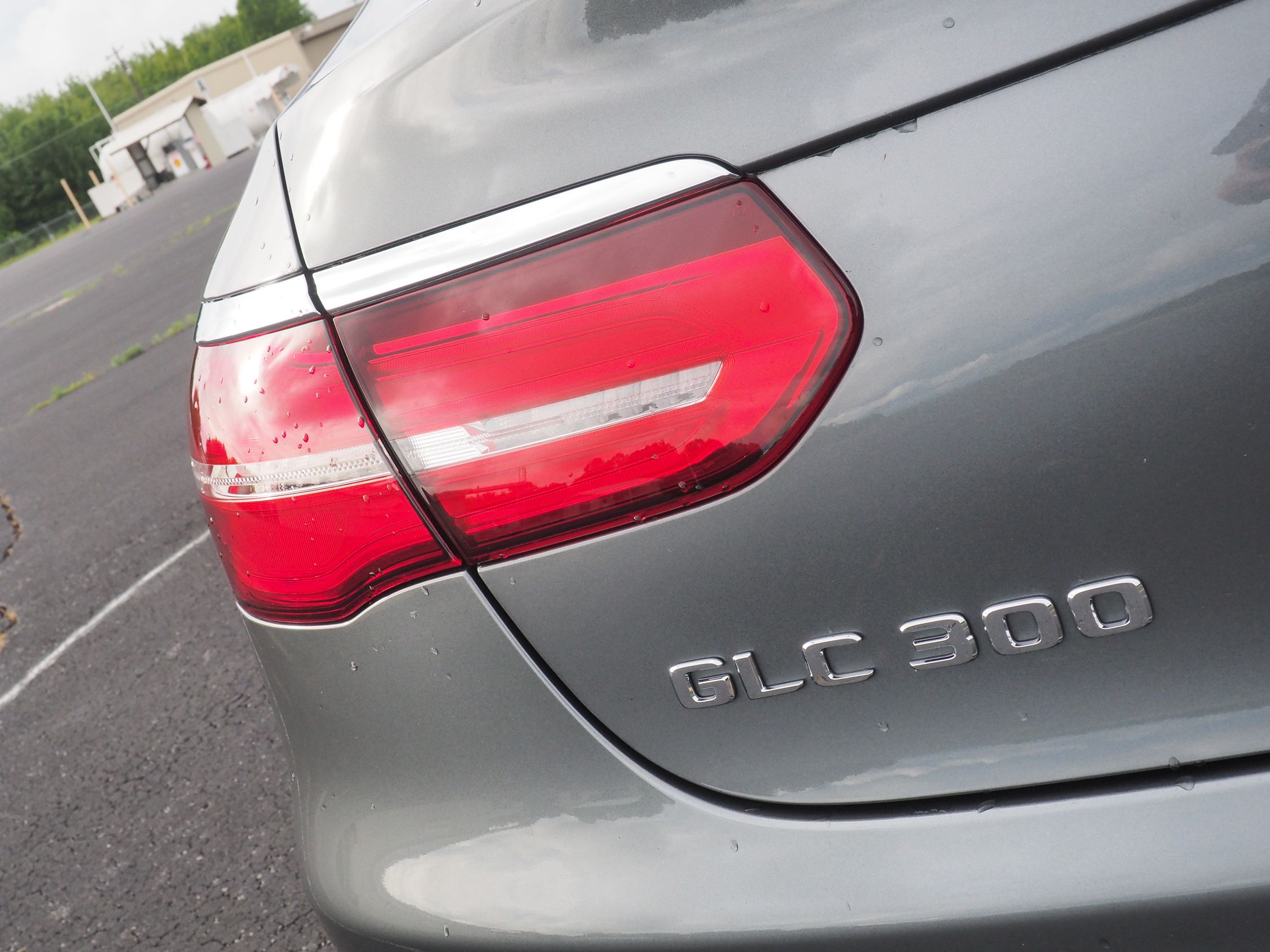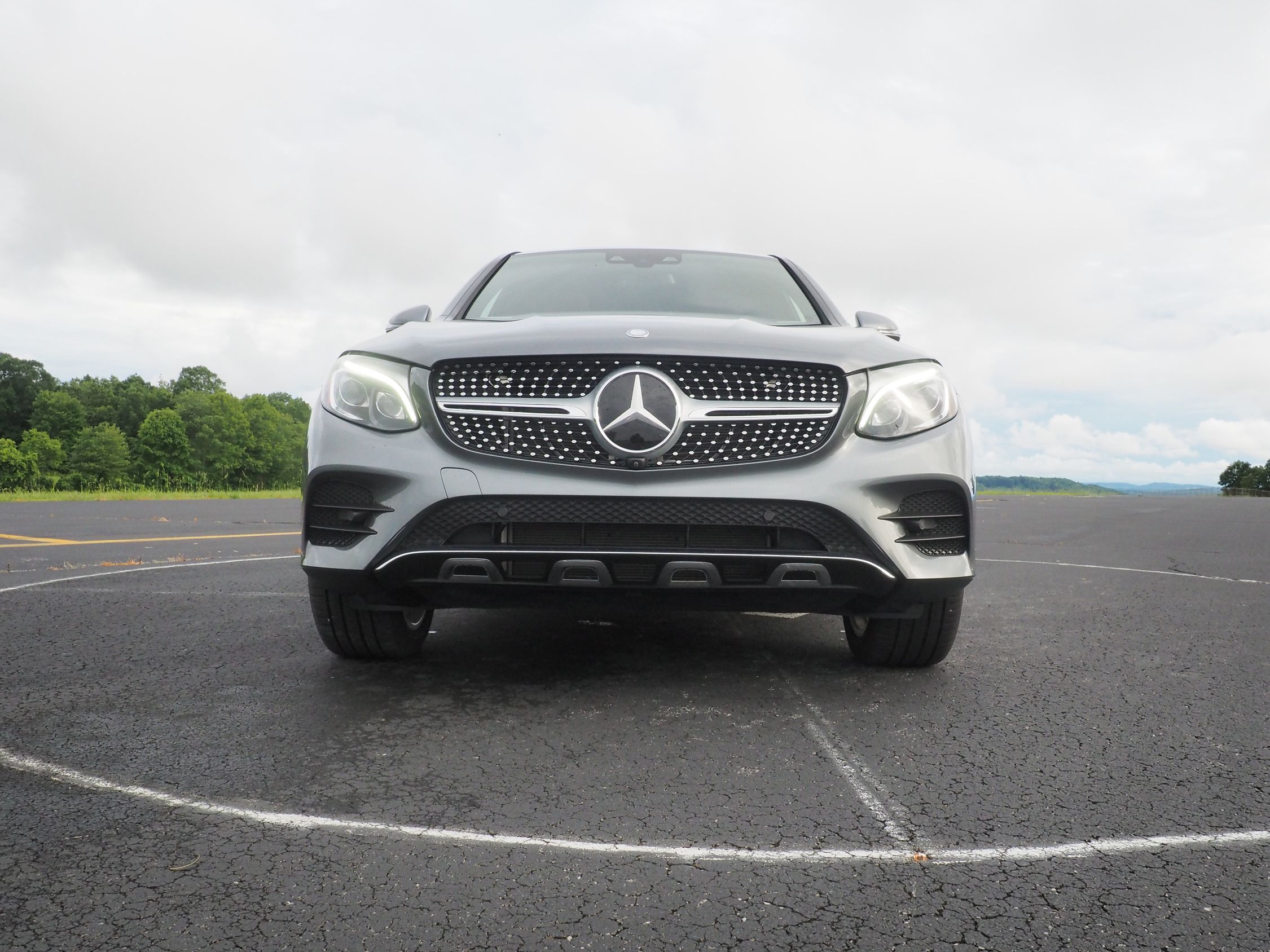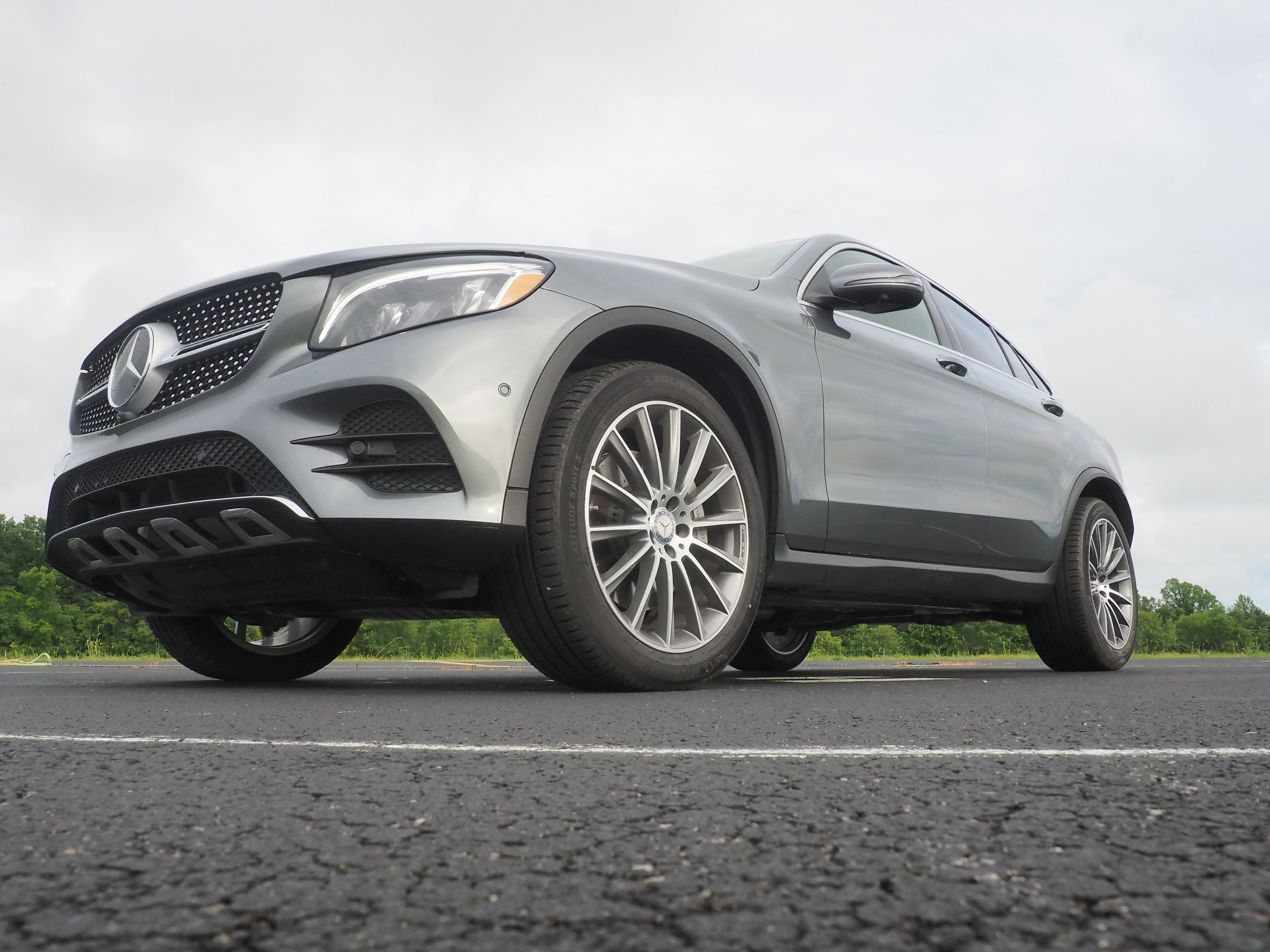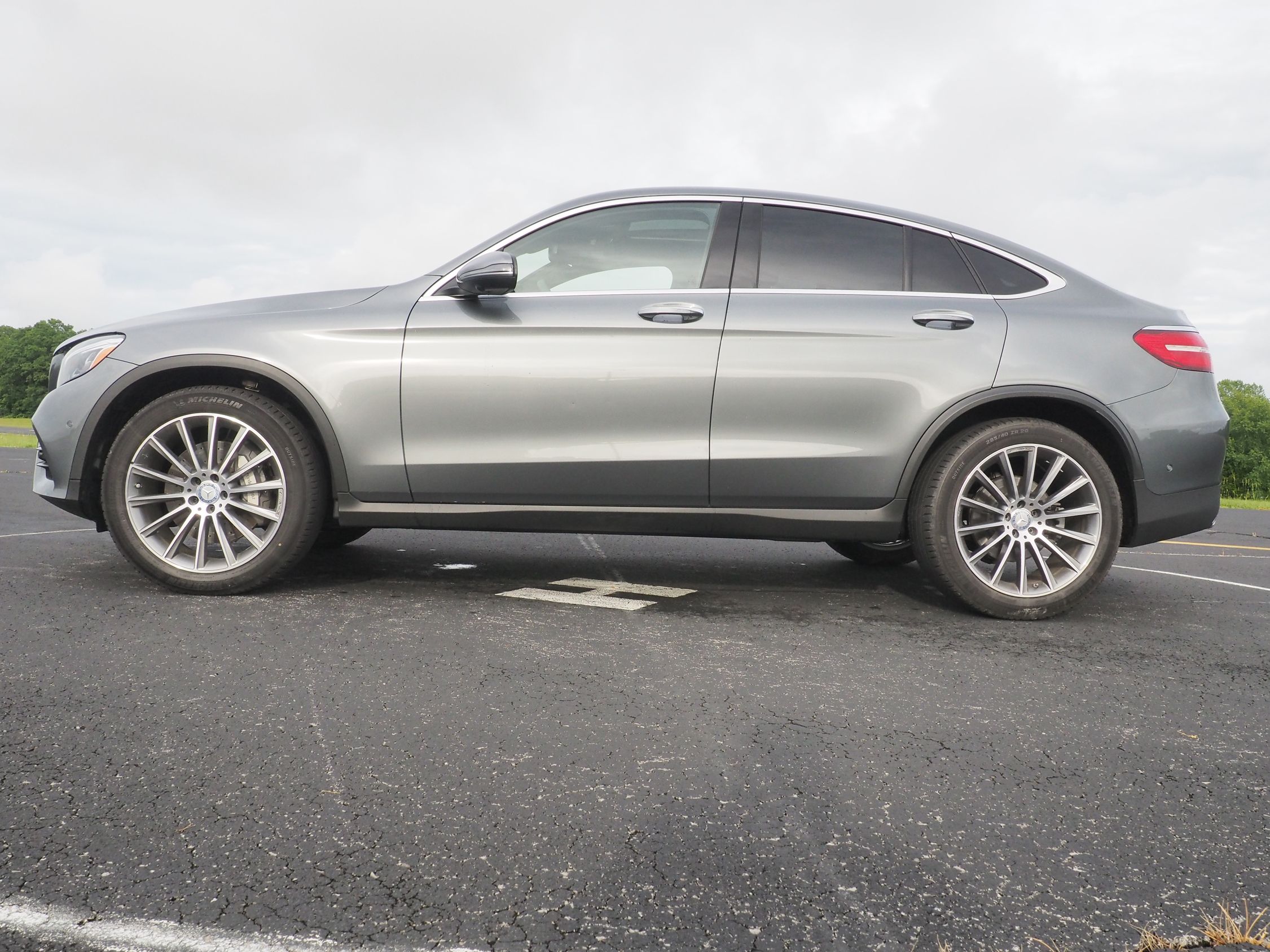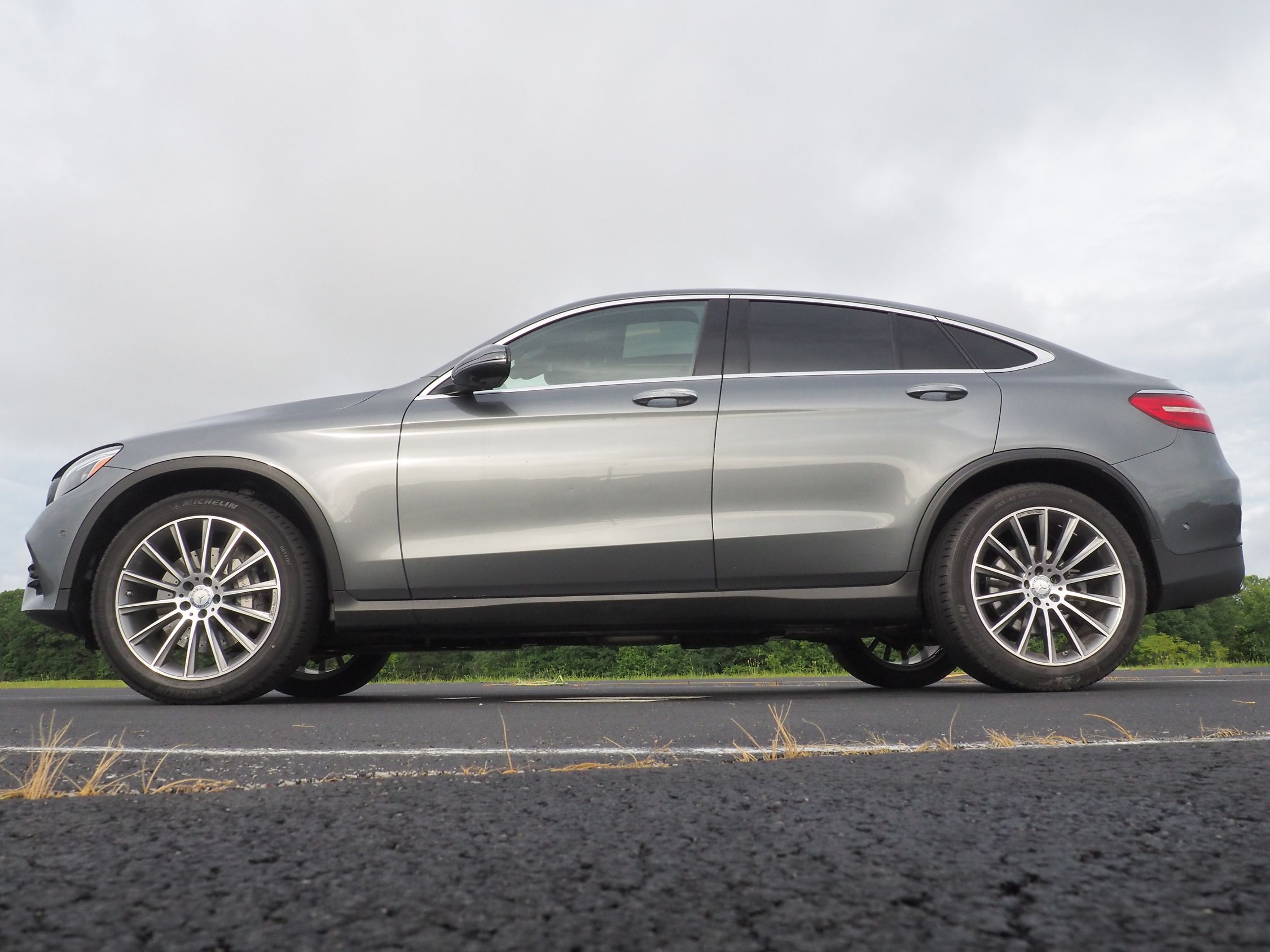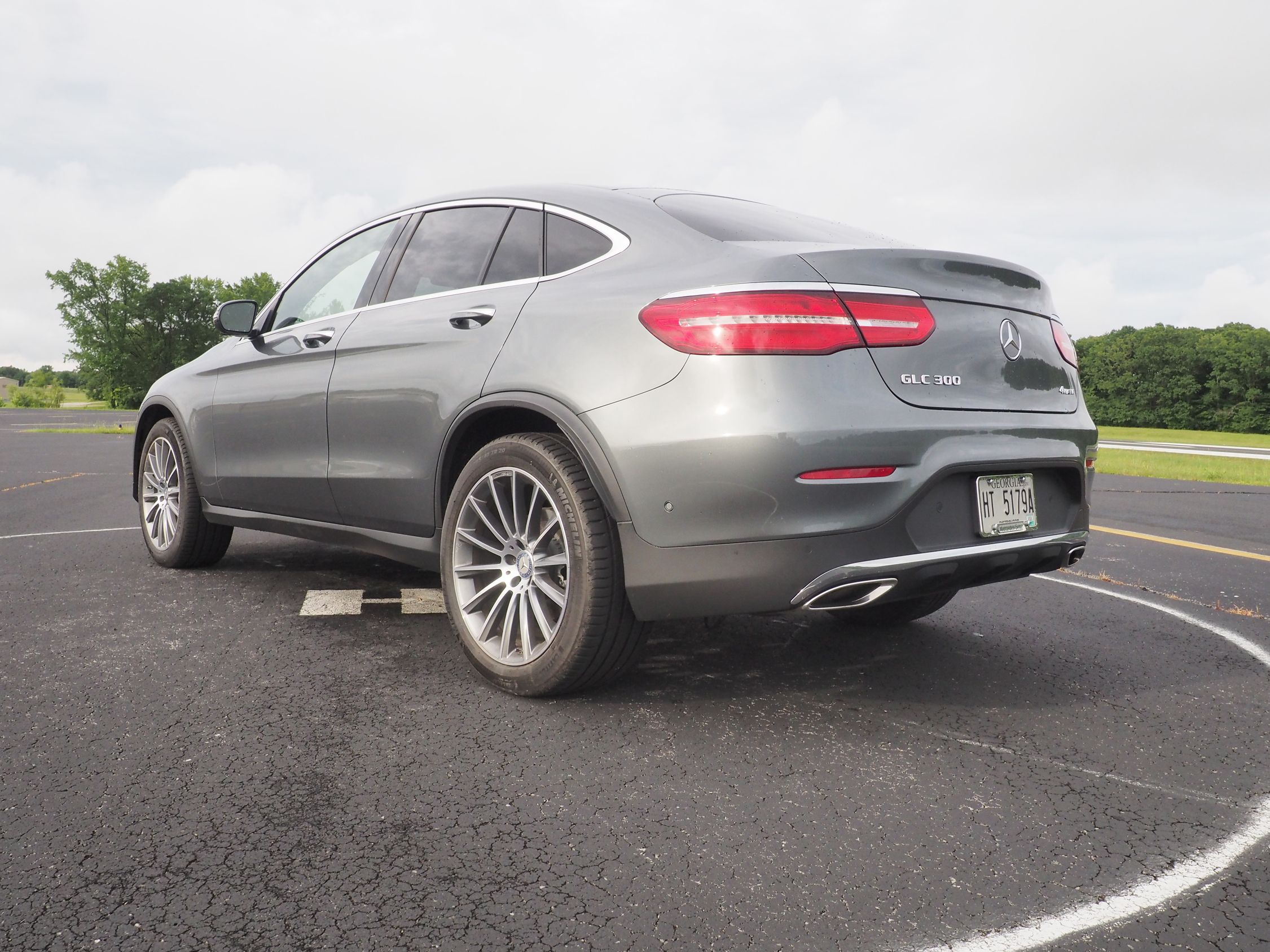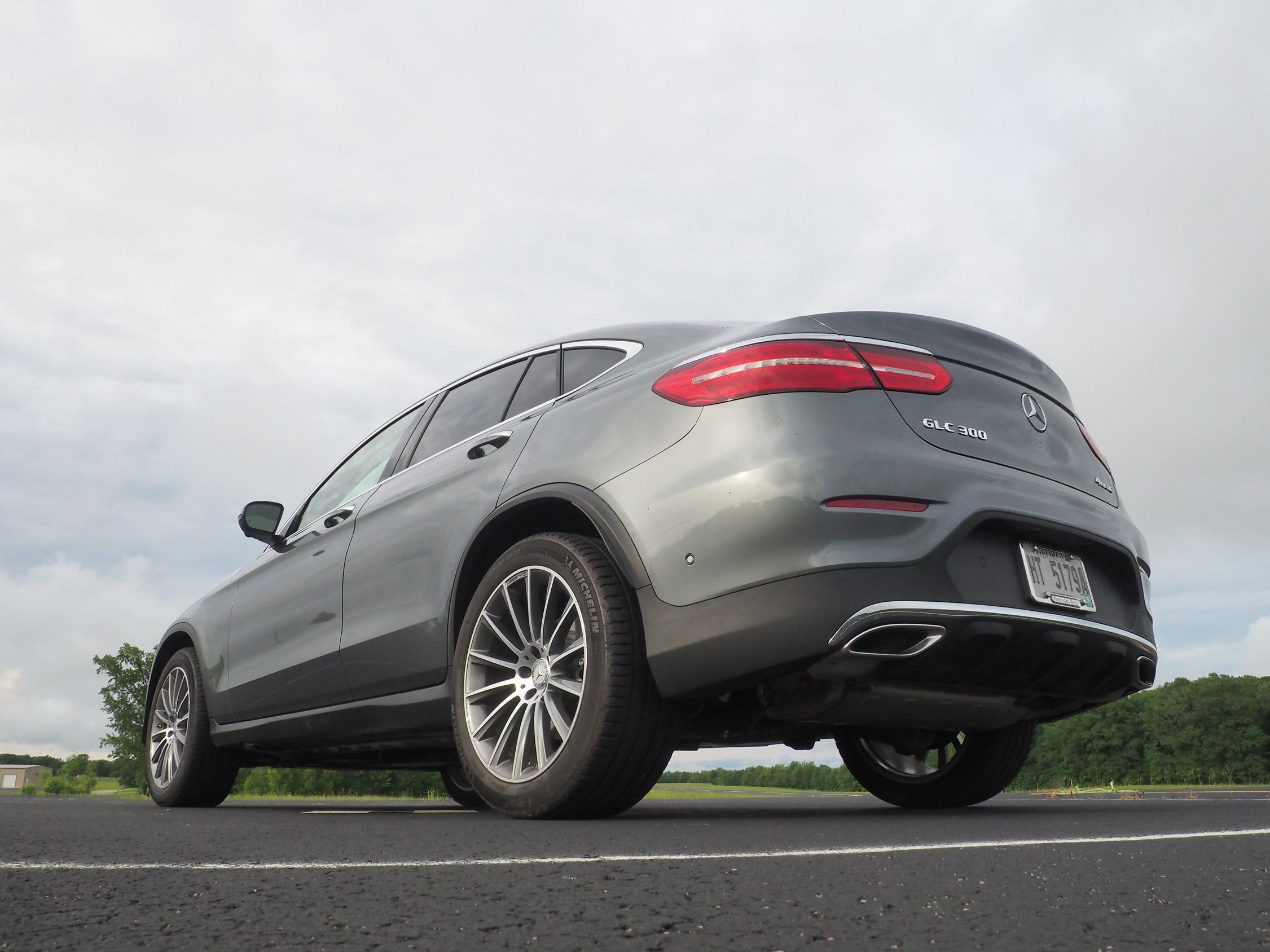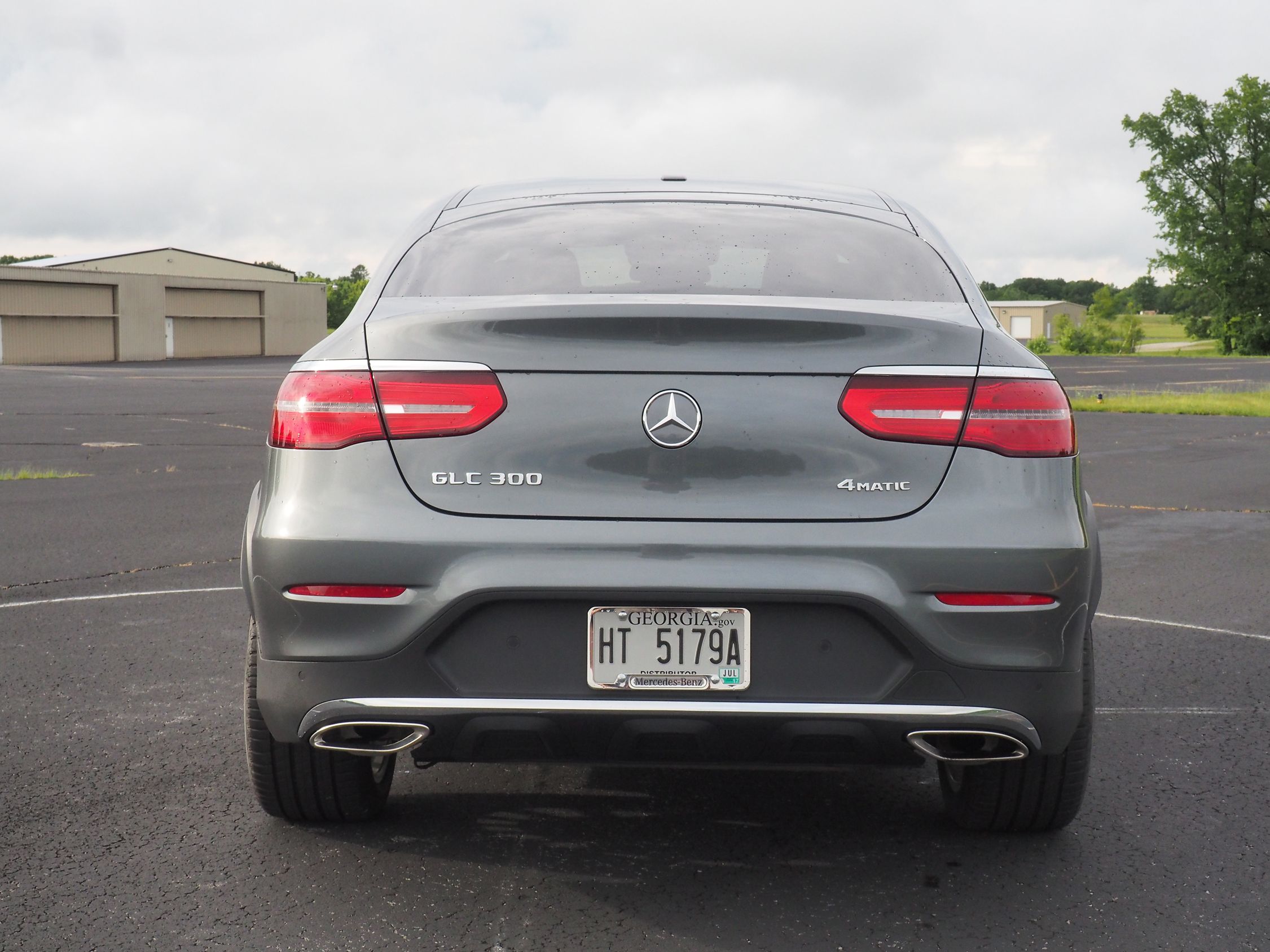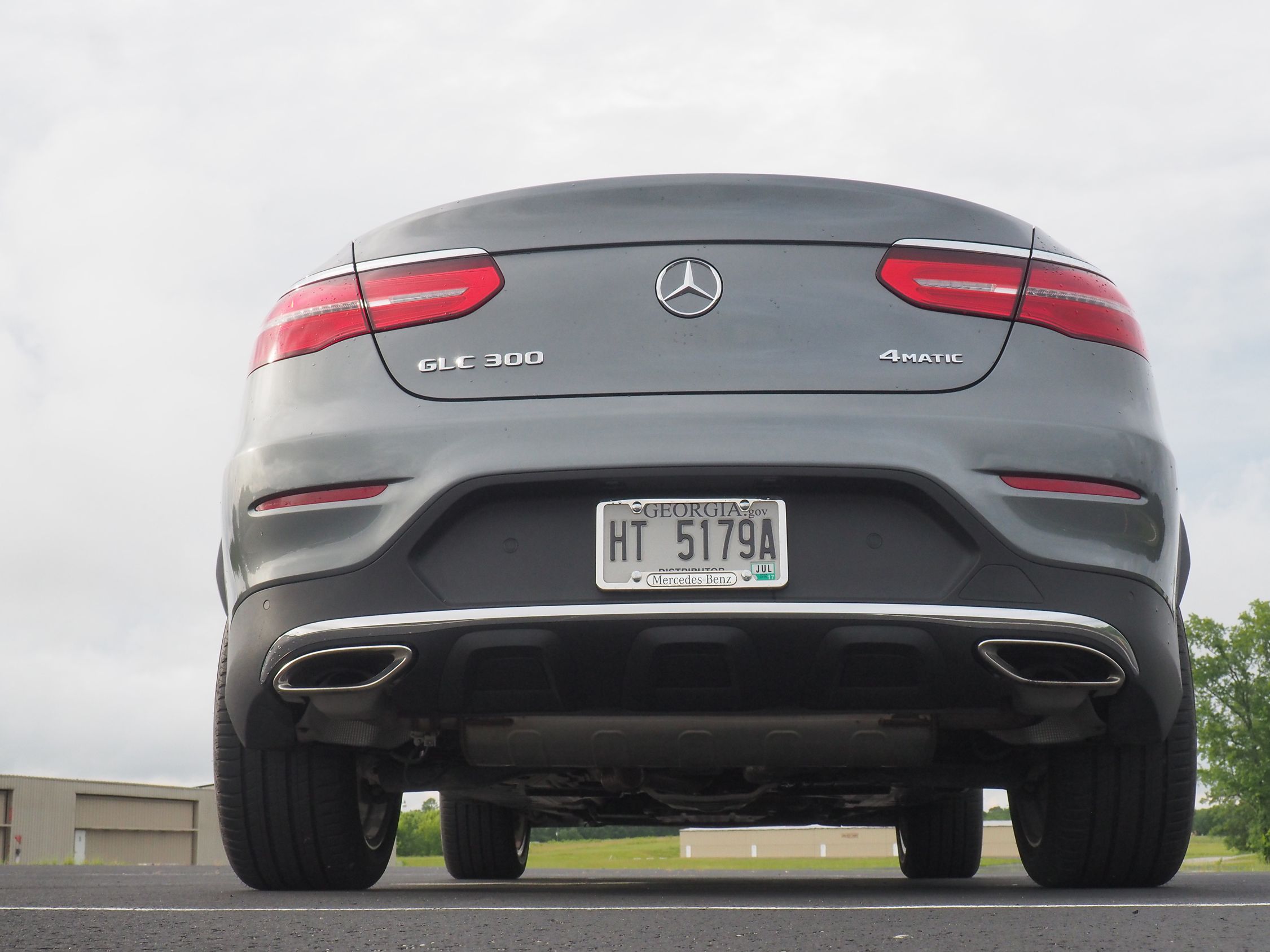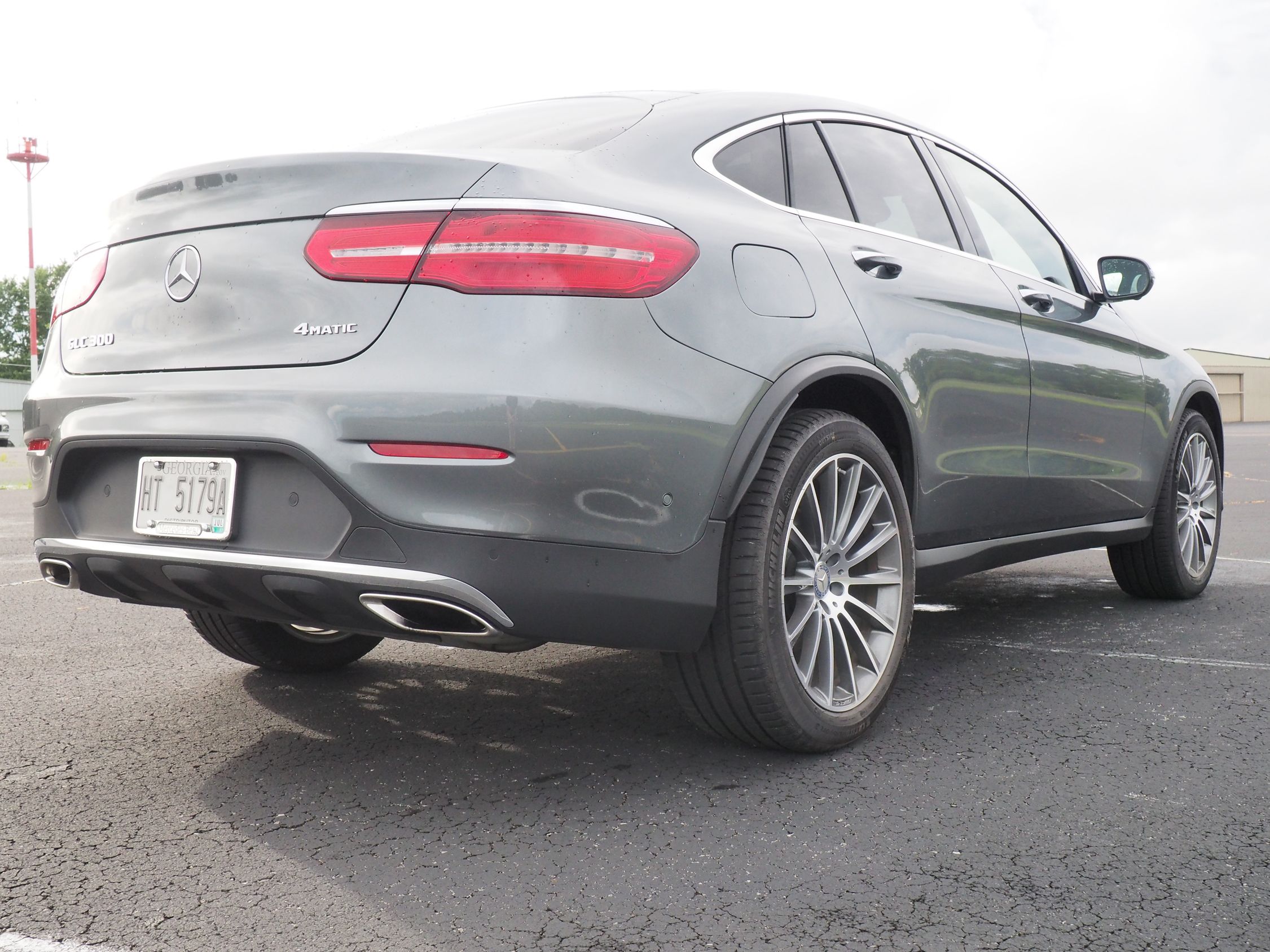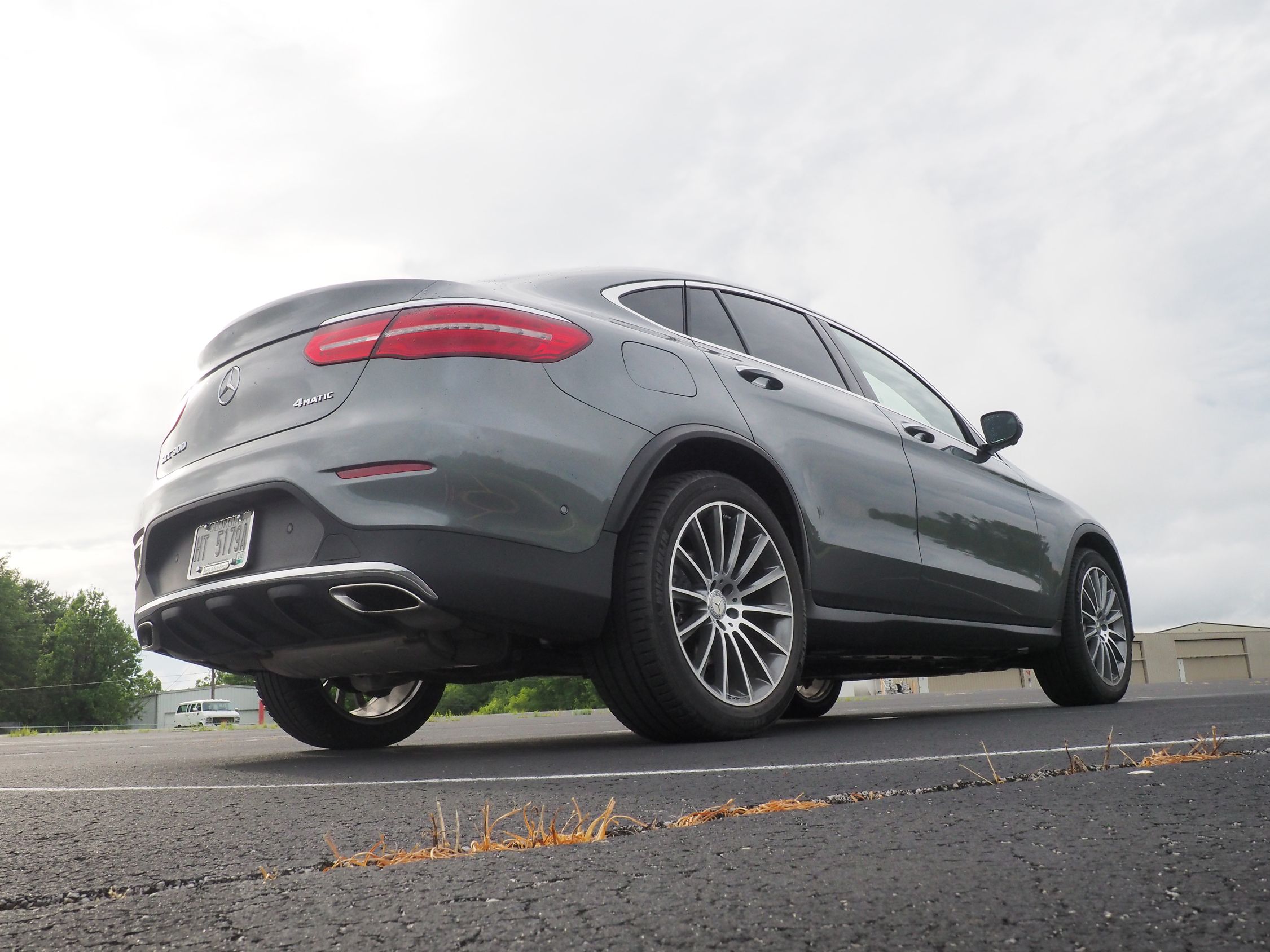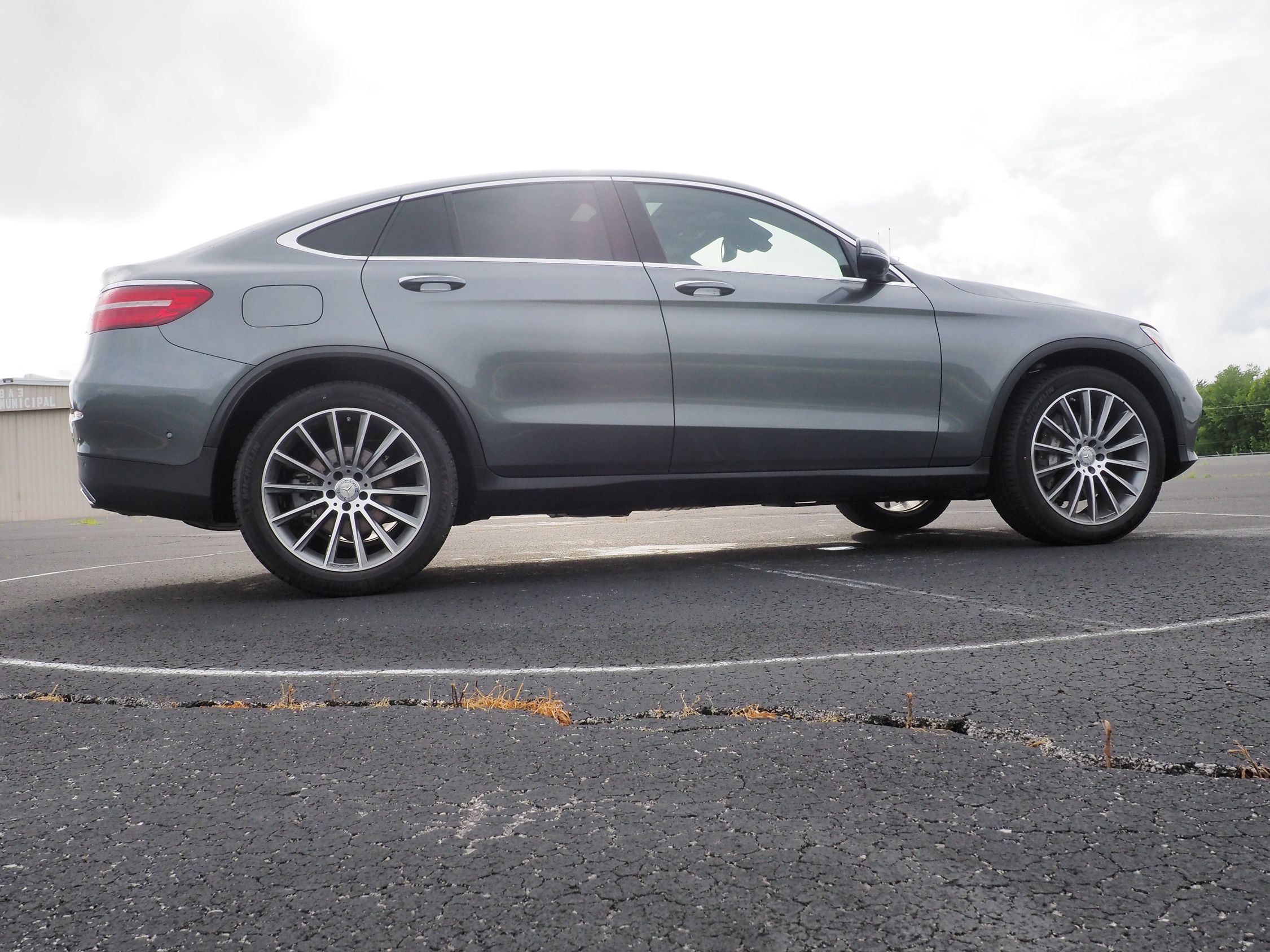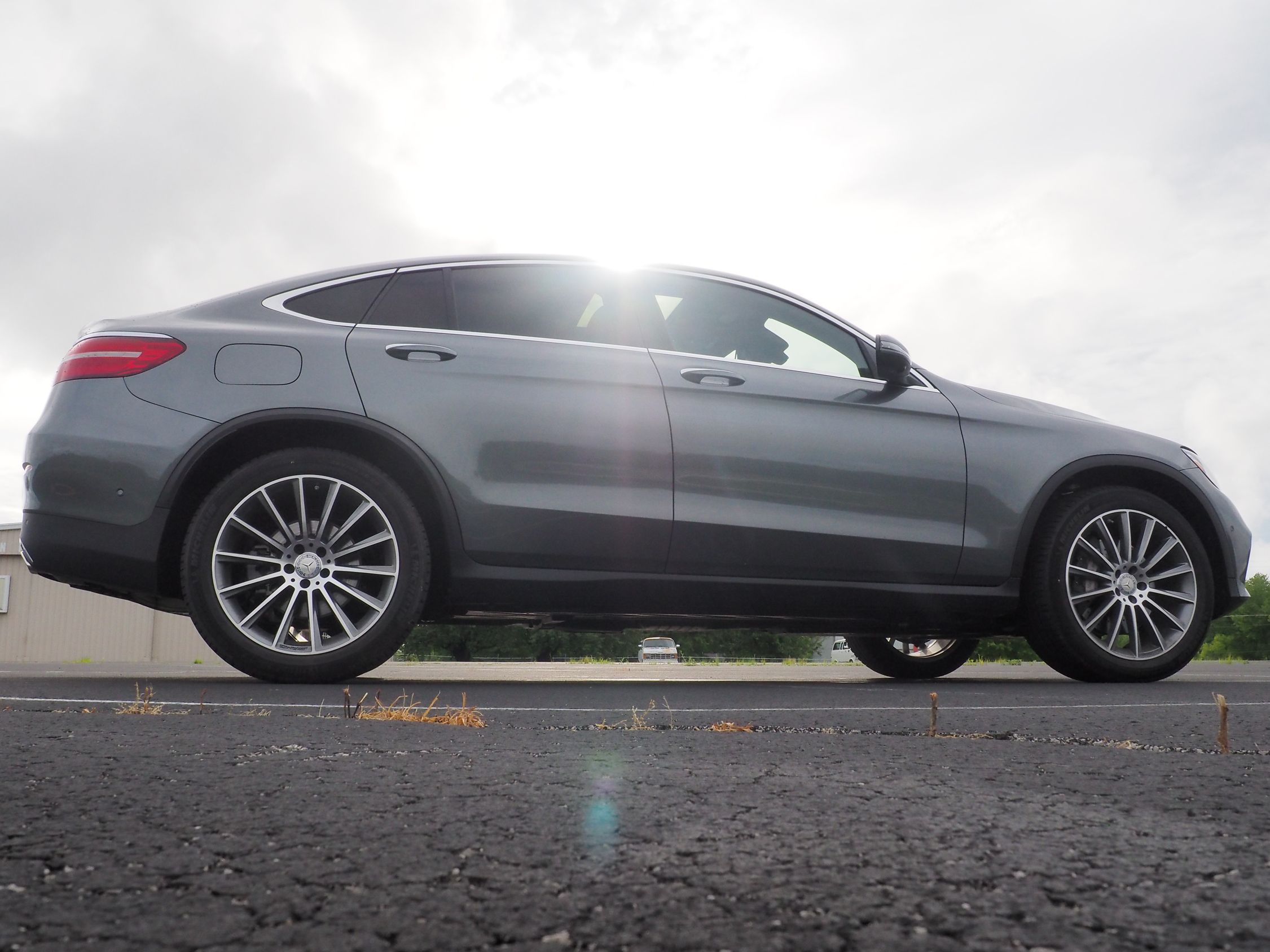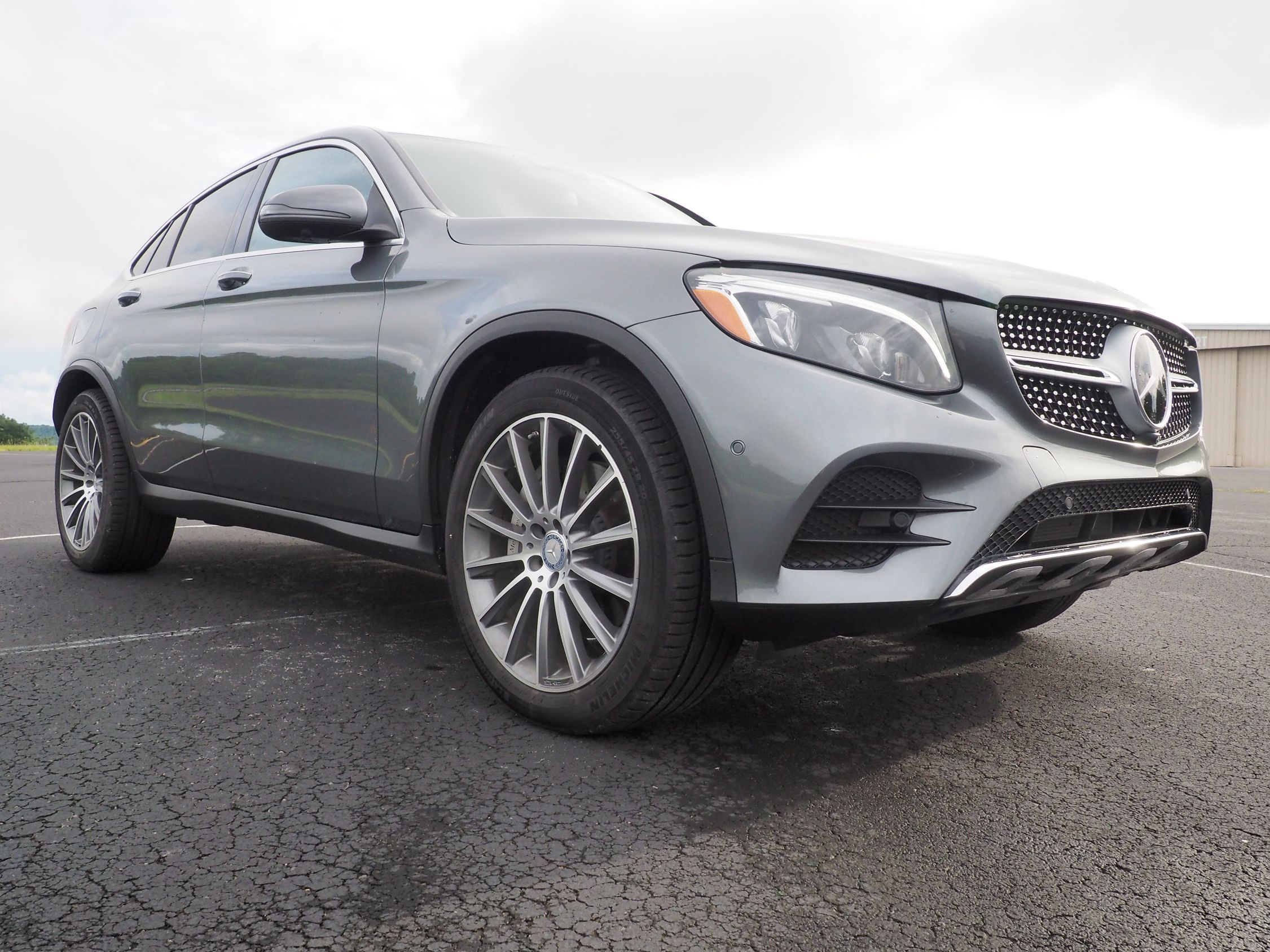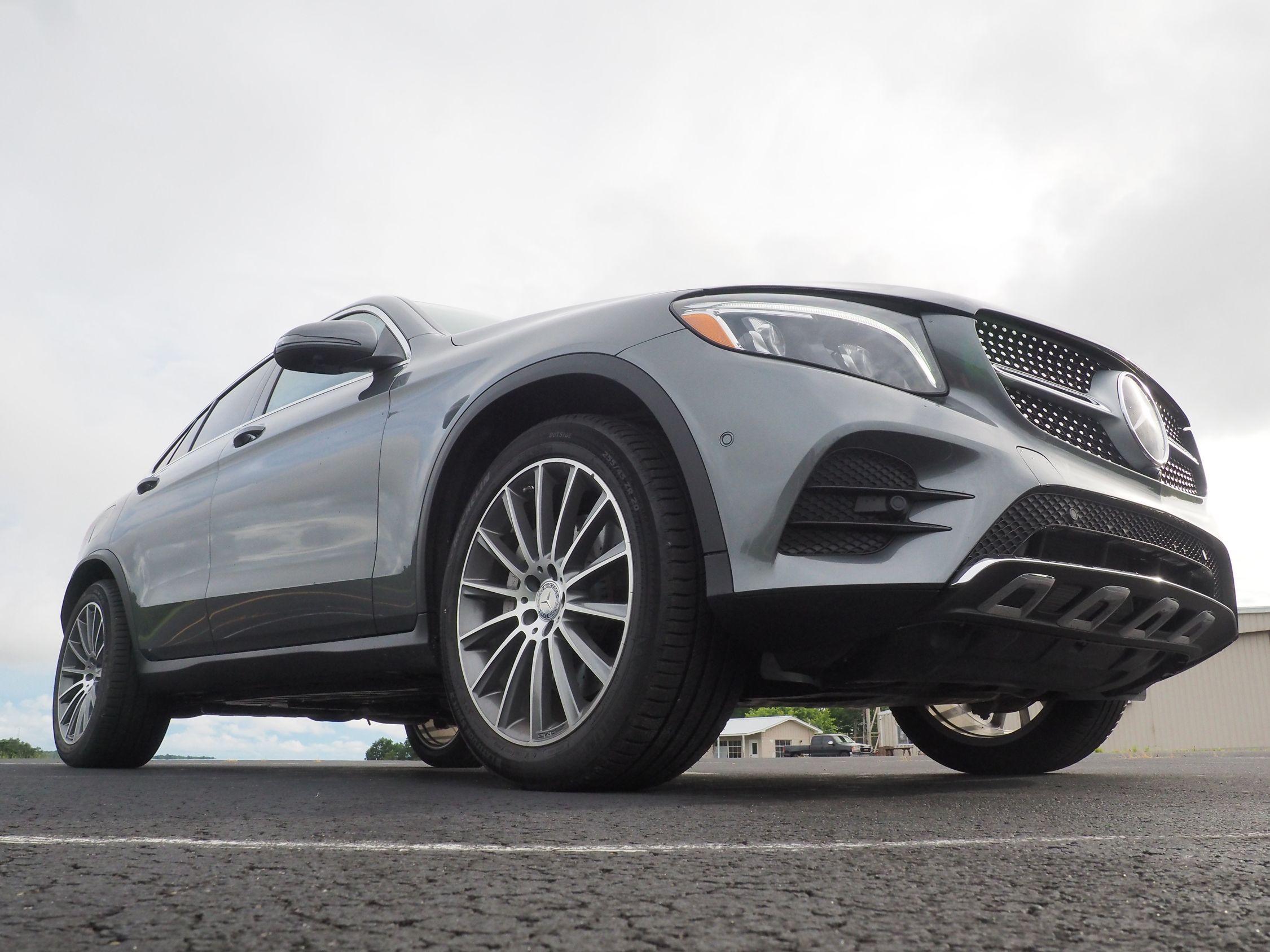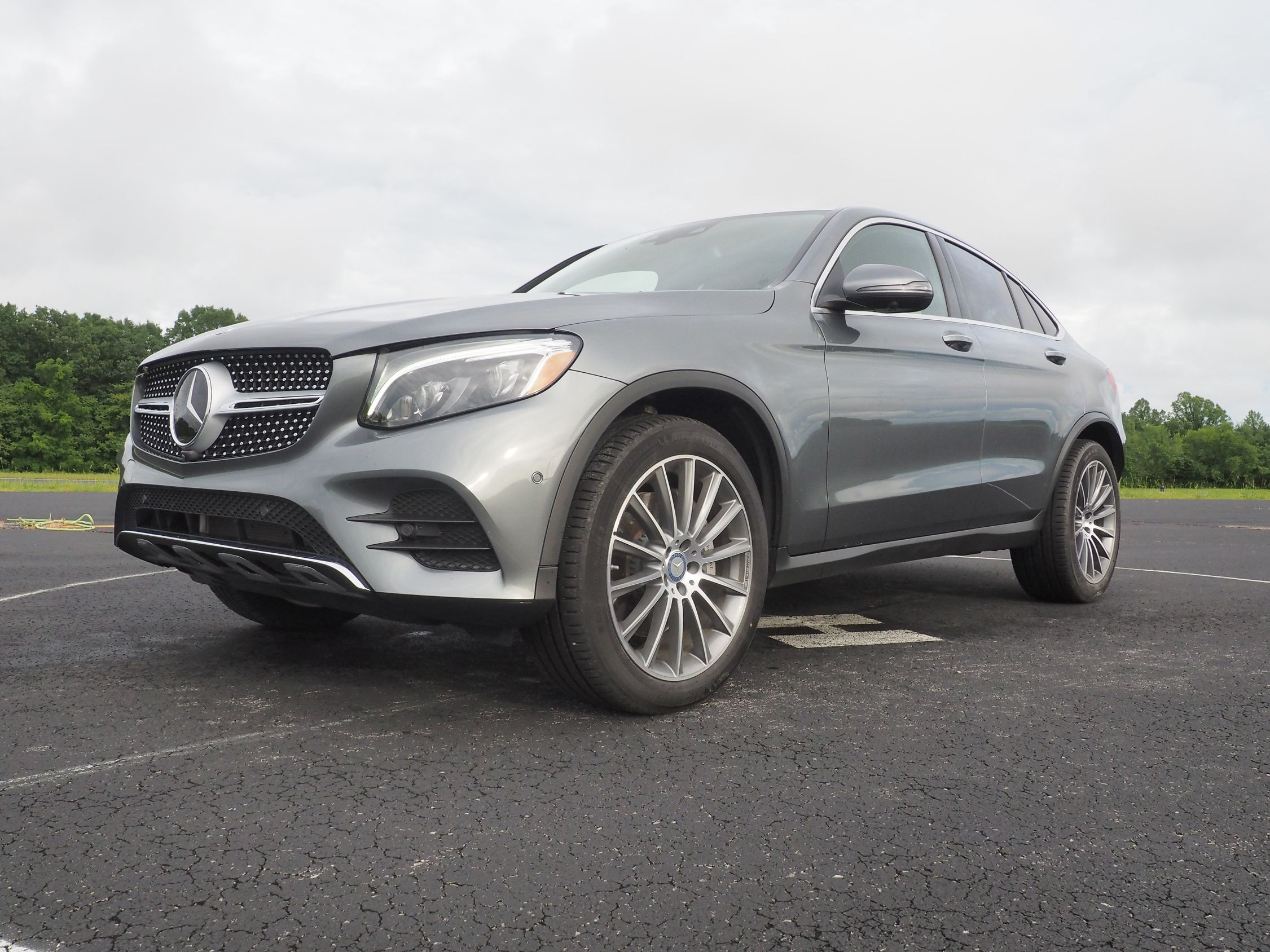Let’s get this out of the way up-front: I don’t “get” the Mercedes-Benz GLC 300 Coupe or its cohort of other luxury-brand SUVs that have sporty, coupe-like rooflines. And I have not had the pleasure of driving most of the GLC 300 Coupe’s competition: sport-tinged SUVs like the BMW X4 and Porsche Macan come to mind.
These are intended to be more fashionable, driver-centric versions of their boxy-backed, taller SUV sisters. To that end, the GLC 300 Coupe was pretty fun to drive, as SUVs go. But it probably makes some cargo space and headroom sacrifices compared to the non-Coupe GLC 300. After all, as with fashionable clothing, sometimes it’s necessary to sacrifice comfort for vanity.
2017 Mercedes-Benz GLC 300 Coupe - Driven
- Make: Array
- Model: 2017 Mercedes-Benz GLC 300 Coupe - Driven
- Engine/Motor: inline-4
- Horsepower: 241 @ 5500
- Torque: 273 @ 1300
- Transmission: 9G-TRONIC 9-speed
- [do not use] Vehicle Model: Array
Design Notes
The 2017 Mercedes-Benz GLC 300 Coupe seems to meld a C Class Coupe roofline with the lower body and ride height of a GLC Class SUV.
The nose is all GLC, with M-B’s tall, muscular grille design and a huge Three-Pointed Star logo that announces to the world that yes, you are driving a Mercedes. Twin-projector headlight lenses are interestingly shaped and contain LED eyebrows that stand out from other daytime running lights on the road.
Fat, directional Michelin Latitude Sport 3 tires make themselves known even from the front view. Measuring 20 inches tall and 255 millimeters wide, they give the GLC 300 Coupe a contact patch more than 10 inches wide at each tire. If this is supposed to be a sports car among compact luxury SUVs, the front view clearly communicates as much.
The side-view is when things start to get interesting. There’s a sharply sloping windshield and a rounded roofline that would look more at home on a sedan or coupe, hence the GLC 300 Coupe’s name.
That roofline transitions to the rear hatch almost like a liftback sedan, with a rear glass that is more horizontal than vertical and a tiny faux trunk lid at the very back. The lower side shares a lot with the current non-Coupe edition of the GLC 300, with a clean design that features a crease just below the door handles and a slighter crease in the lower quarter of the doors. The big 20-inch wheels have 14 spokes and fit the sporty personality of the design.
At the rear, the Mercedes-Benz GLC 300 Coupe can be polarizing. It’s almost like someone took a C Class Coupe and stretched it in Photoshop to make it appear taller. That faux trunk lid has a smooth lip at the top that almost evokes a spoiler, bridging two wide taillights. The lack of vertical daylight opening in the rear hatch glass becomes apparent when viewed from this angle. Once again, those chunky Michelins make themselves known from this angle, poking out just a bit from the lower rear bumper face.
Exterior Dimensions
|
Overall length (Inches) |
186.3 |
|
Overall height (Inches) |
63.1 |
|
Overall width (Inches) |
82.5 (w/mirrors) |
|
Wheelbase (Inches) |
113.1 |
Interior Notes
When I opened the door of my 2017 Mercedes-Benz GLC 300 Coupe tester, its sporting pretenses became clearer. Bathed in optional red leather, it appeared to be making an appeal to the emotions of drivers who have traded in their C Class Coupes because they need to haul kids now, but they don’t want to feel like they have completely given up on enjoying a sporty drive now and then.
Thankfully, the red leather was limited to the seats. The steering wheel, dash, and door panels were more tastefully done, in my opinion, with black leather, soft-touch injection-molded plastics, aluminum accents, and black woodgrain trim.
The steering wheel felt great in my hands, with perforated leather and nice sport grips at 10 and 2. My only nitpick was with M-B’s control interface. It felt like stalk overload, because Mercedes puts a tiny shift lever on the column as well as a cruise control stalk. Combine that with the turn signal/windshield wiper control stalk and the tilt/telescope steering adjustment stalk, and it can be a little overwhelming to the uninitiated. I think using a small directional pad-style button for steering wheel adjustment, as many automakers do nowadays, would go a long way to improve the situation. So would putting the cruise controls on one of the steering wheel spokes.
The dash was pleasing to look at, though not distracting, and featured Mercedes-Benz’s COMAND infotainment suite with a floating, tablet-like screen mounted in the center stack. It was controlled by a combination control dial and touchpad in the center console, where a shift lever traditionally might be found in a vehicle like this. I found the controls relatively easy to master, though I liked the comparative simplicity of the control wheel I saw in the 2017 Mercedes-AMG CLA45 a little better. That model lacked the directional pad, and I think that made it easier to use.
The 14-way power driver’s seat with memory was very comfortable. Rear seating was plentiful for my kids, one in a rear-facing car seat and the other dangling his lanky six-year-old legs from a booster. Mercedes-Benz didn’t provide measurements for interior leg- and headroom, but I had no trouble transporting my family of four in the GLC 300 Coupe.
What I did have a little trouble with was transporting our weekly grocery haul in the cargo area. Again, Mercedes-Benz didn’t provide interior dimensions or capacity measurements, but I found the sloping rear glass cut into the GLC 300 Coupe’s ability to haul tall, boxy cargo.
The interior had a couple of surprise-and-delight features, however. One was the HVAC system’s perfume option. It was ingenious, and it kept the car smelling great -- if a bit feminine -- all week. I later learned GLC 300 Coupe owners can get different scents from their Mercedes-Benz dealer, so I’m sure there’s a wide range of scents for every nose. The HVAC system sends air past a perfume canister’s perforated lid on its way out the vents, giving it a light scent that is not too heavy. It’s fully adjustable, and you can even turn off the smell if you want. It was part of the Air Balance Package, a sensible (for German cars) $350 option.
Another thing that delighted me was the Burmester Surround Sound audio system. With 14 speakers and a 10-channel, 640-watt amplifier, it provided plenty of thump for my tunes and remained crystal clear all the way up and down the volume range. I often say the measure of a good sound system is how clear it sounds at either extreme -- low and high volume. By that test, Burmester delivers an exquisite system here. Well worth the $850 upgrade price. You won’t build a system that sounds this good using aftermarket car audio, not even for twice that price.
The Drive
My tester was equipped with Mercedes-Benz’s 4MATIC all-wheel drive, and as with previous 4MATIC-equipped Mercs I have driven, it made the GLC 300 Coupe a joy to throw around corners. Yes, even with its tall, SUV ride height, you can have fun with a GLC 300 Coupe in the twisty stuff.
The 2.0-liter turbocharged four-cylinder engine was plenty stout, offering up 241 horsepower and 273 pound-feet of torque, the latter coming on pretty low in the rev range and staying strong through a relatively wide band as revs climbed. It was kind of like a denatured version of the raucous, 375-horse AMG-tuned 2.0-liter engine I experienced in the CLA45. Turbo lag was not noticeable in day-to-day driving, with the boost coming on early and smooth to provide power to squeeze into an opening at the top of the on-ramp.
I’d go so far as to say the GLC 300 Coupe moves far better than any SUV of its size ought to be able to move. Chuck it into a sweeping bend, lay into the throttle, and it doesn’t get addled. It just squats down and holds its line. I’m sure 4MATIC plays a huge role here, but let’s not overlook the suspension tuning of the GLC 300 Coupe, which did a great job controlling body roll when driven in a spirited manner, but did not beat me up over rough pavement and potholes. So many sporty SUVs compromise ride comfort in the name of handling, but not the GLC 300 Coupe.
Power is delivered to the wheels by a 9G-TRONIC automatic transmission that was exceptionally smooth in my experience. Its kick-down was quick when I needed to pass a slower-moving car on a two-lane highway, and it was never harsh in its shifts, even in the sportiest “Sport +” driving mode. Shift paddles let me control the action myself if I wanted to.
Even though I wasn’t sold on the exterior design or the red leather seats inside, the GLC 300 Coupe made good on its promise to deliver a sporty driving experience in an SUV that rides higher than your typical Mercedes-Benz sedan. I enjoyed the drive a lot. I just didn’t get its look.
Drivetrain Specifications
|
Engine |
2.0-liter inline-4 turbo |
|
Horsepower |
241 HP @ 5,500 RPM |
|
Torque |
273 LB-FT @ 1,300-4,000 RPM |
|
Transmission |
9G-TRONIC 9-speed automatic |
|
Curb weight (Lbs) |
4,045 |
|
0 to 60 mph |
6.4 seconds |
The Competition
BMW X4
One could argue the BMW X4 is the reason Mercedes-Benz built the GLC 300 Coupe. With the X4 launching in 2014 and finding its niche of buyers, M-B was not to be outdone, introducing the GLC 300 Coupe in 2015 as a 2016 model.
BMW X4’s base 2.0-liter four-cylinder turbo gasser is right on-par with the Merc, at 240 horsepower. It’s down a gear to the GLC 300 Coupe, however, with eight forward speeds. Performance is likely to be very similar between the two, as the BMW has xDrive all-wheel drive standard and should offer the brand’s usually well-sorted suspension.
Pricing is very similar between the two, with base MSRPs starting at $46,600 for the GLC 300 Coupe and $47,600 for the X4 xDrive28i.
If you’re shopping between these two, it’s probably going to come down to which one you like to look at the most. For me, the BMW is better-looking inside and out, but that’s not to say I find either model particularly beautiful.
Read our full review on the 2017 BMW X4.
Porsche Macan
The Porsche Macan paralleled the BMW X4’s introduction in 2014. Where Porsche differs from Mercedes-Benz and BMW, however, is that there is not a more traditional SUV-shaped Macan. BMW’s X3 and Mercedes-Benz’s GLC 300 are both more upright, boxy-profile crossovers. The Porsche Macan has a design that seems to split the difference between sporty, sedan-like roof profile and useful, SUV-like roof profile.
The base Porsche Macan comes in at $47,800 and is far more attractive to my eyes than either the GLC 300 Coupe or the X4. It offers similar performance credentials to those competitors, too, putting down 252 horsepower and making the run from zero to 60 MPH in about 6 seconds. All-wheel drive is standard.
Porsche offers an interesting middle step between the base Macan and the high-performance Macan GTS. The Macan S puts down 340 horsepower and shaves about a second off the base Macan’s zero-to-60 time for an extra $7,500 or so. To get more performance out of the GLC 300 Coupe, you have to pony up for the $60,400 GLC 43 Coupe that barely edges out the Macan S at 362 horses and a 4.8-second zero-to-60 time. Likewise, to get a faster BMW X4, you have to go for the X4 M40i for $59,250. For that additional cheddar, it’ll get to 60 in 4.7 seconds thanks to 355 horsepower.
Ultimately, even though I have not driven the Macan, it looks like the deal of the segment. Combining its more attractive looks with its class-competitive performance and lower cost of entry for the faster Macan S, it’s definitely an appealing package.
Read our full review on the 2017 Porsche Macan.
Infiniti QX50
An interesting competitor in this group is the Infiniti QX50. Like the Porsche Macan, it has just enough of the car-like roofline to make it look a little sexier than your average luxury SUV. The main area where it differs from the mostly four-cylinder competitors above is its standard 3.7-liter V6 with 325 horsepower.
Its seven-speed automatic transmission and standard rear-wheel drive are deficits, however, and its refinement is not likely to be on the same level as that of Mercedes-Benz, BMW, or Porsche. And its technology features are not going to be nearly as advanced as the above competitors. Infiniti’s optional audio system is made by Bose, and will pale in comparison to the GLC 300 Coupe’s Burmester audio system.
But the Infiniti QX50’s unique selling proposition here is value. It’s a whole lot of sporty crossover SUV-thing for the money, coming in at a base price of $34,650. If you want to compare all-wheel drive models since the above competitors all offer it standard, the Infiniti QX50 AWD will set you back $36,450. It’s a relative steal. Load up a QX50 AWD with options, and it’ll probably be about on-par with the base prices of some of the competition above.
Read our full review on the 2017 Infiniti QX50.
Conclusion
Just because I don’t dig the exterior design of the Mercedes-Benz GLC 300 Coupe does not mean it’s a bad car. It’s really fun to drive, for a compact SUV. It was practical enough for most of my uses. It wasn’t too thirsty, getting mid-20s MPG in my mixed driving.
At an as-tested price of $63,505, it offers a lot of driving enjoyment from a powertrain that won’t suck your bank account dry on fuel costs. EPA rates it at 22 MPG city, 27 MPG highway, 24 MPG combined. Furthermore, it was plenty roomy and comfortable for my family.
For those who like the “coupe” styling melded with SUV practicality, the 2017 Mercedes-Benz GLC 300 Coupe certainly deserves a look and a test drive.
References
Mercedes-Benz GLC
Read our full review on the 2017 Mercedes-Benz GLC Coupe.

